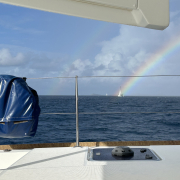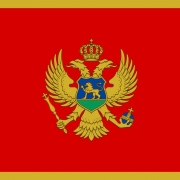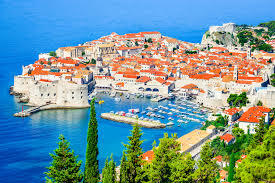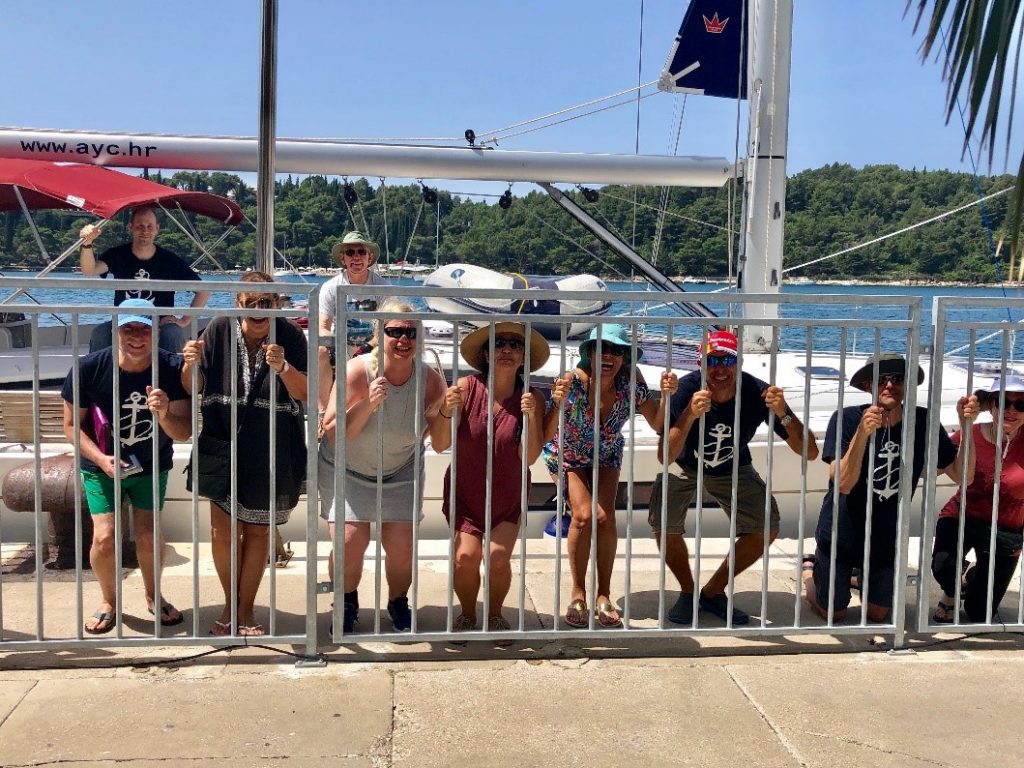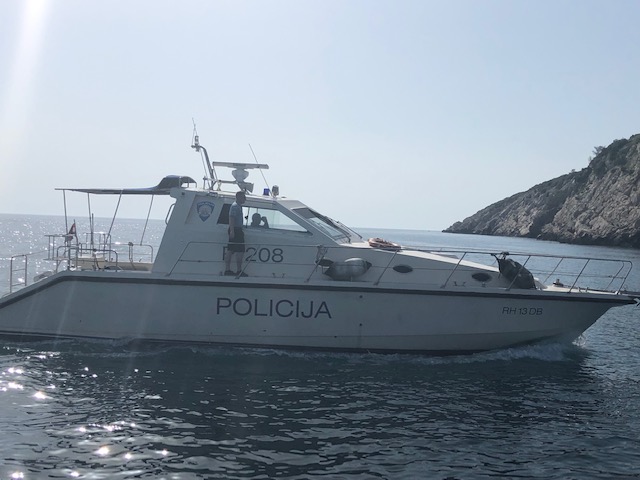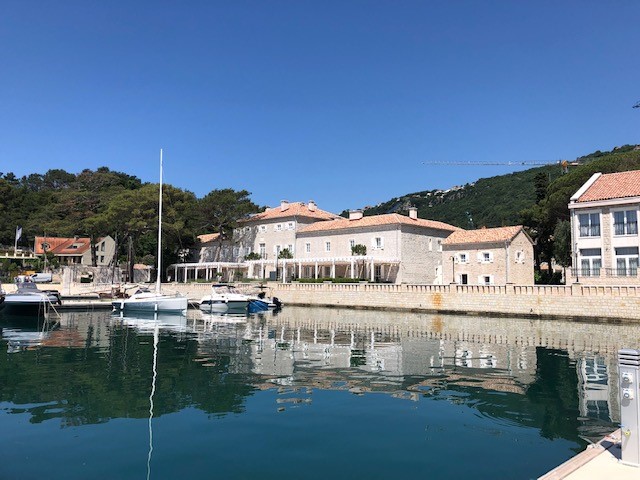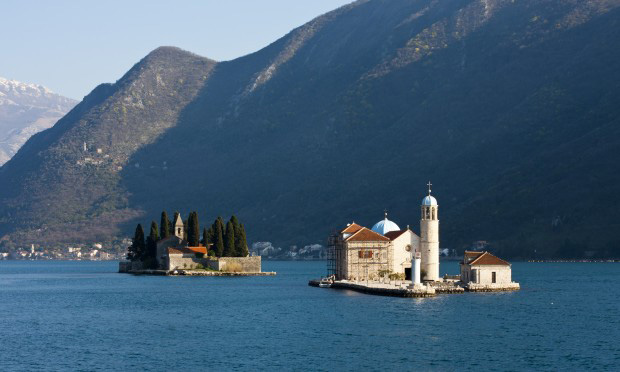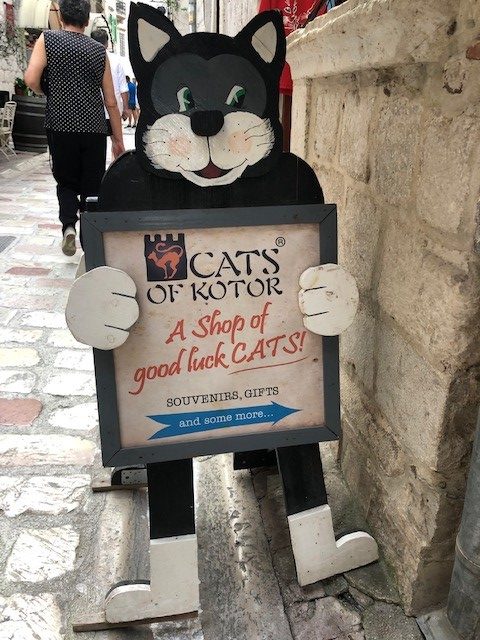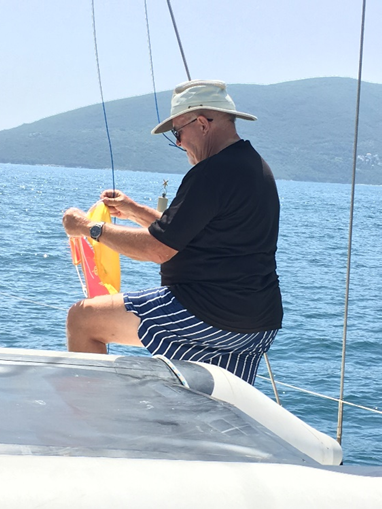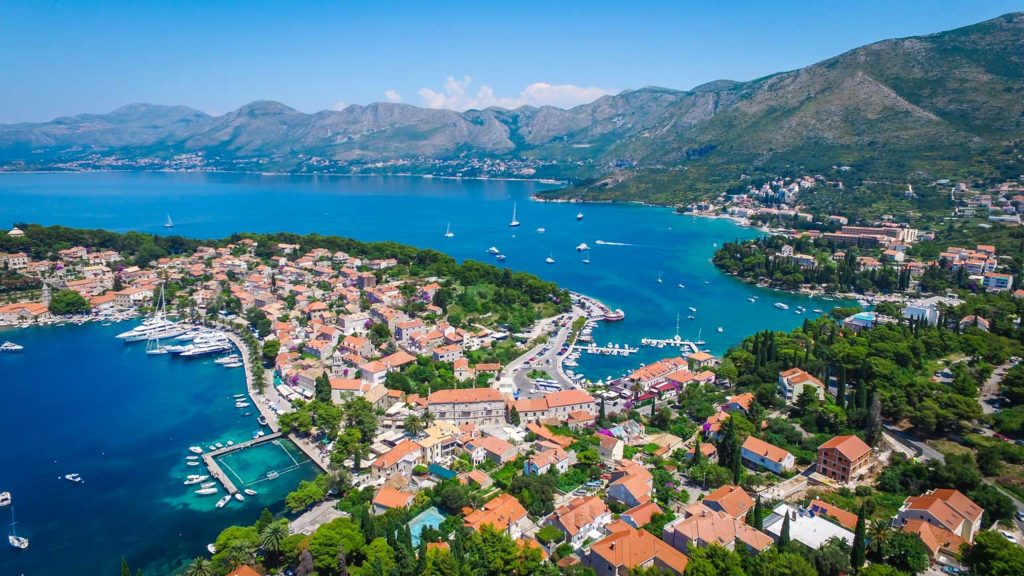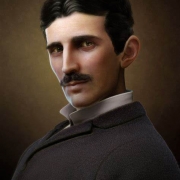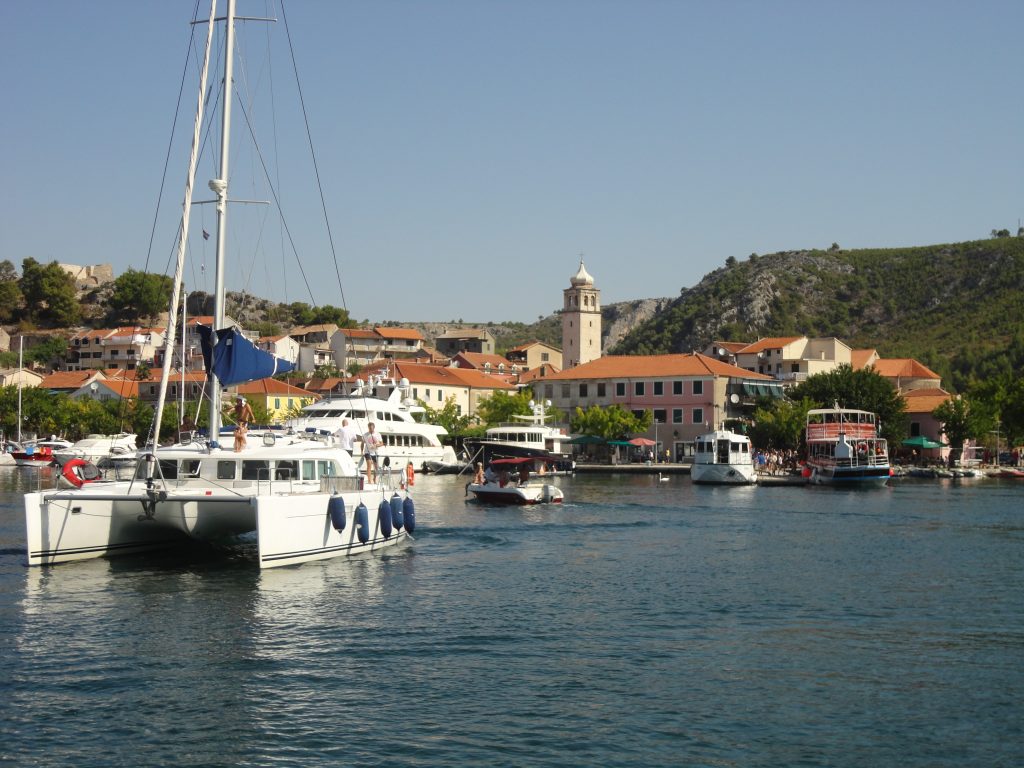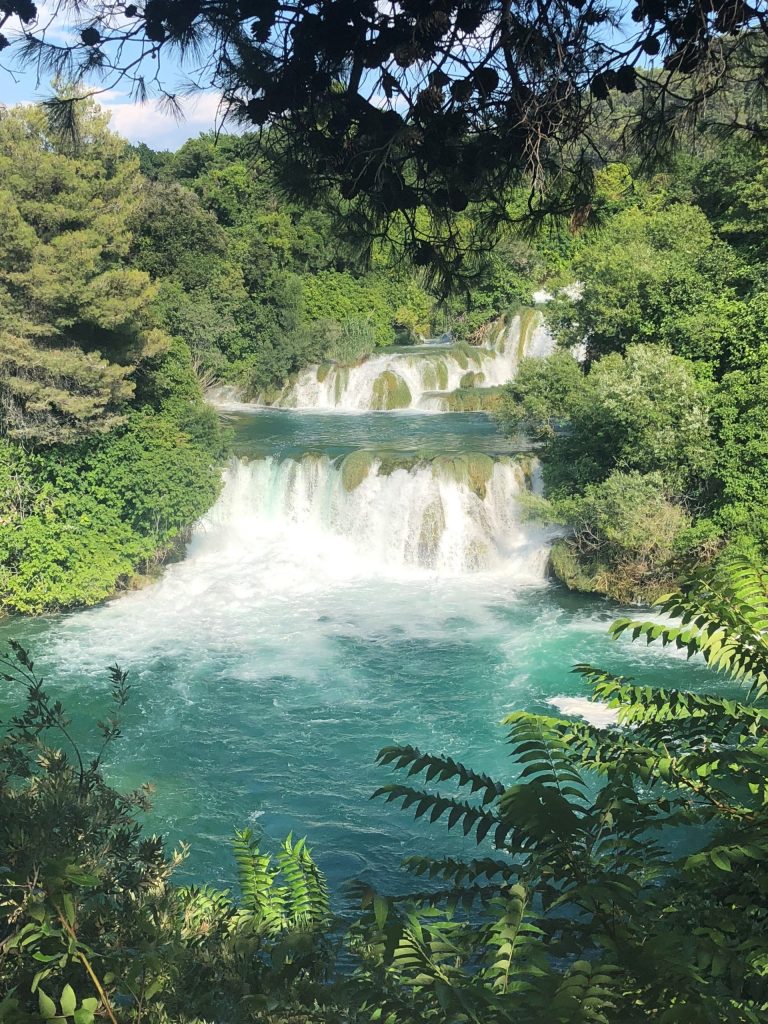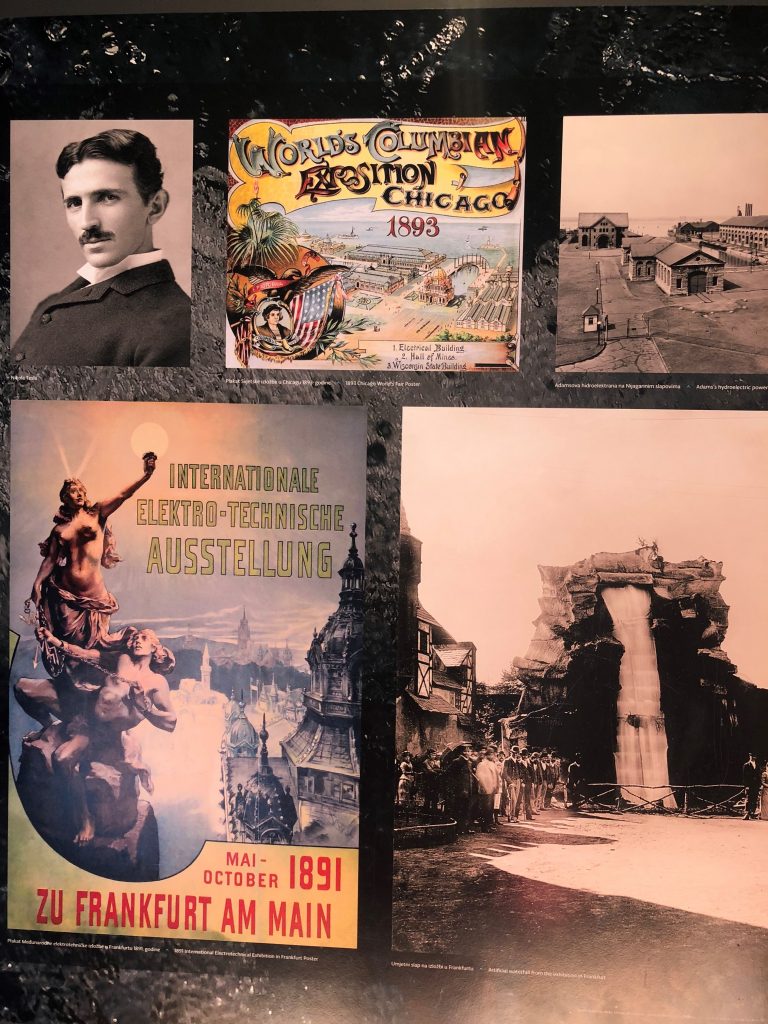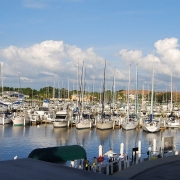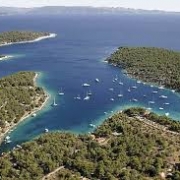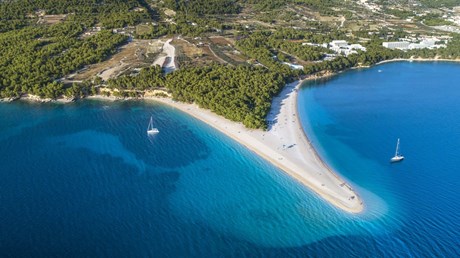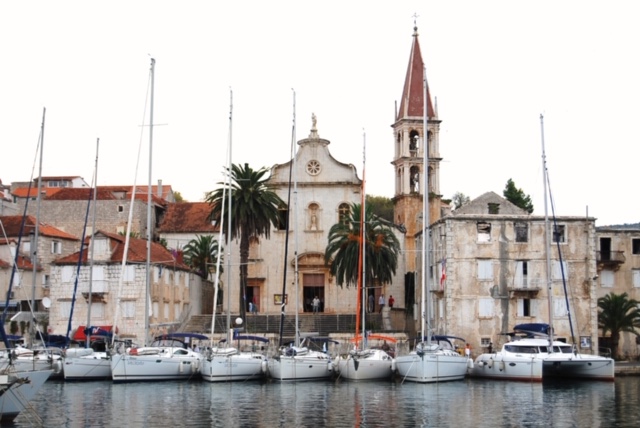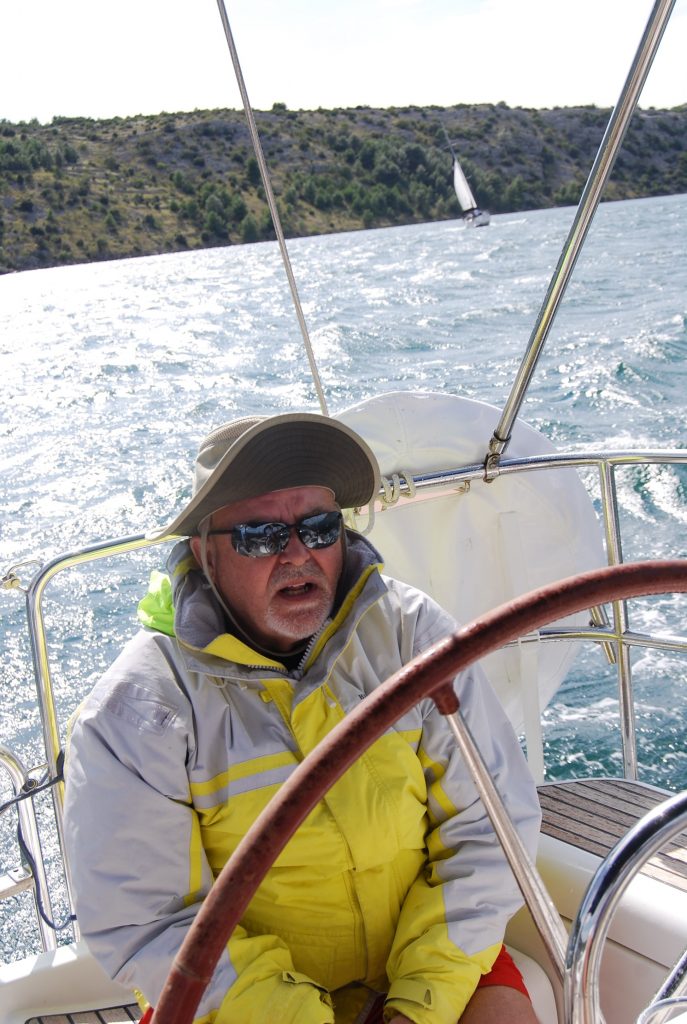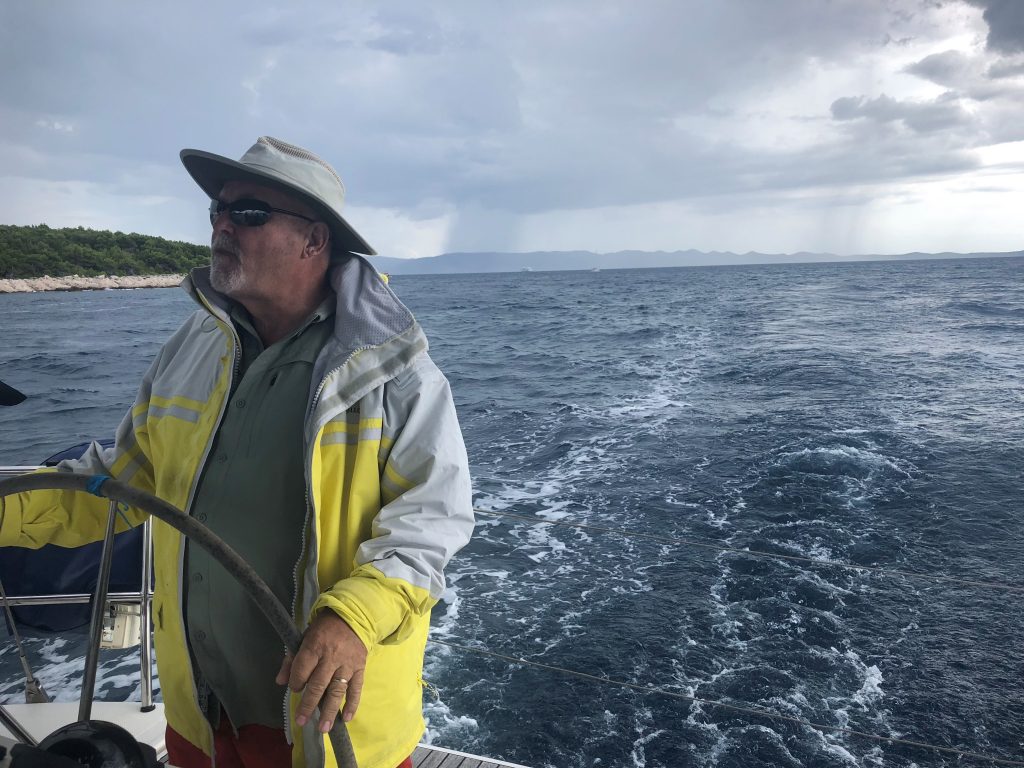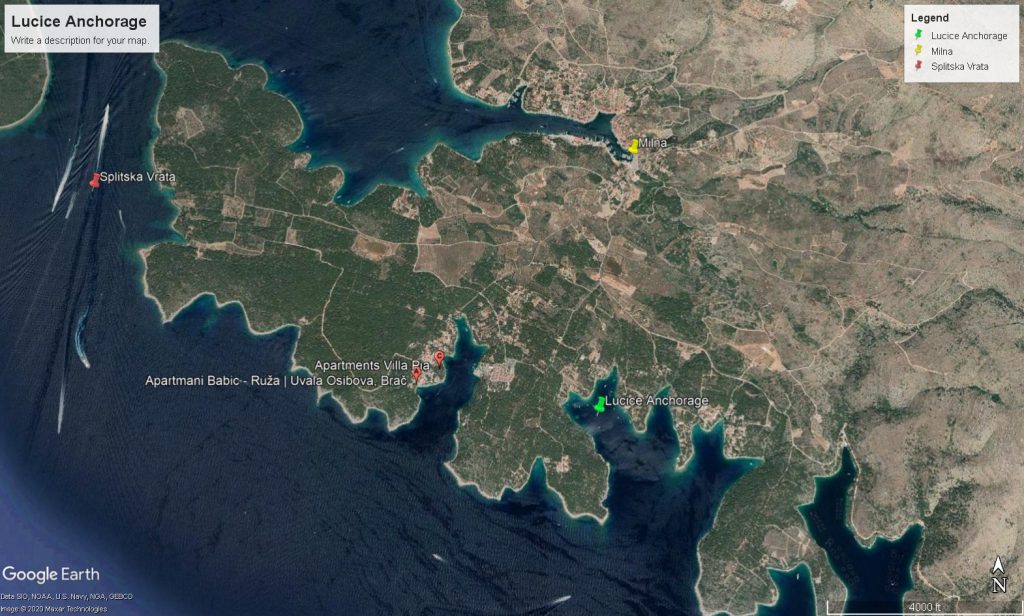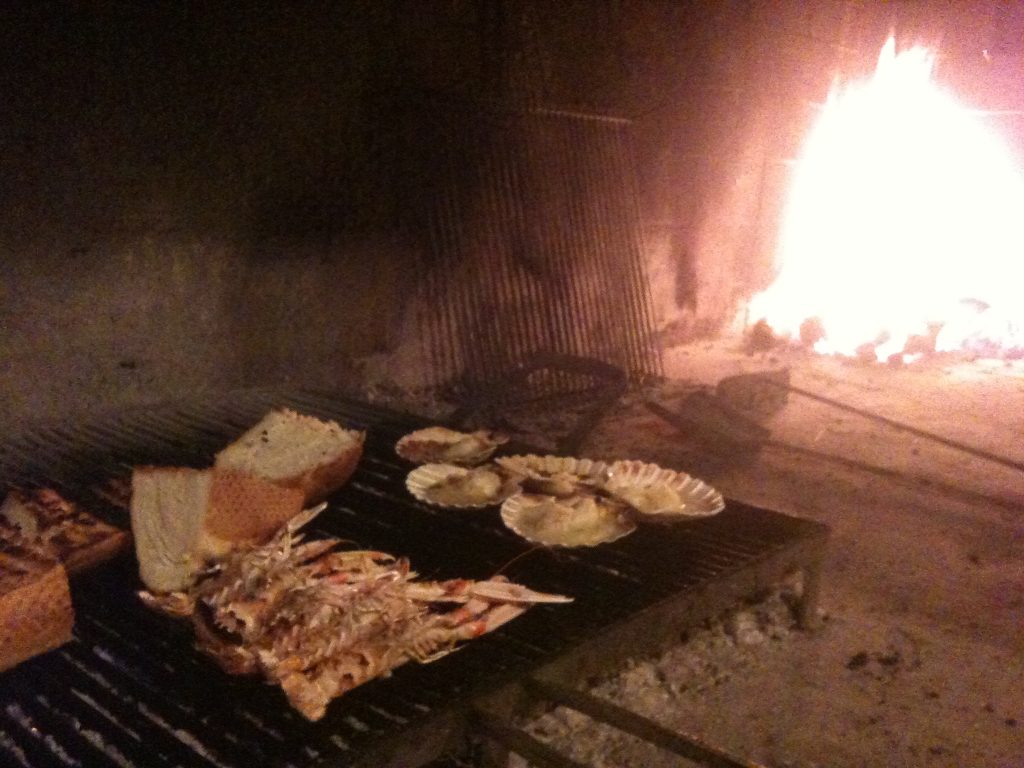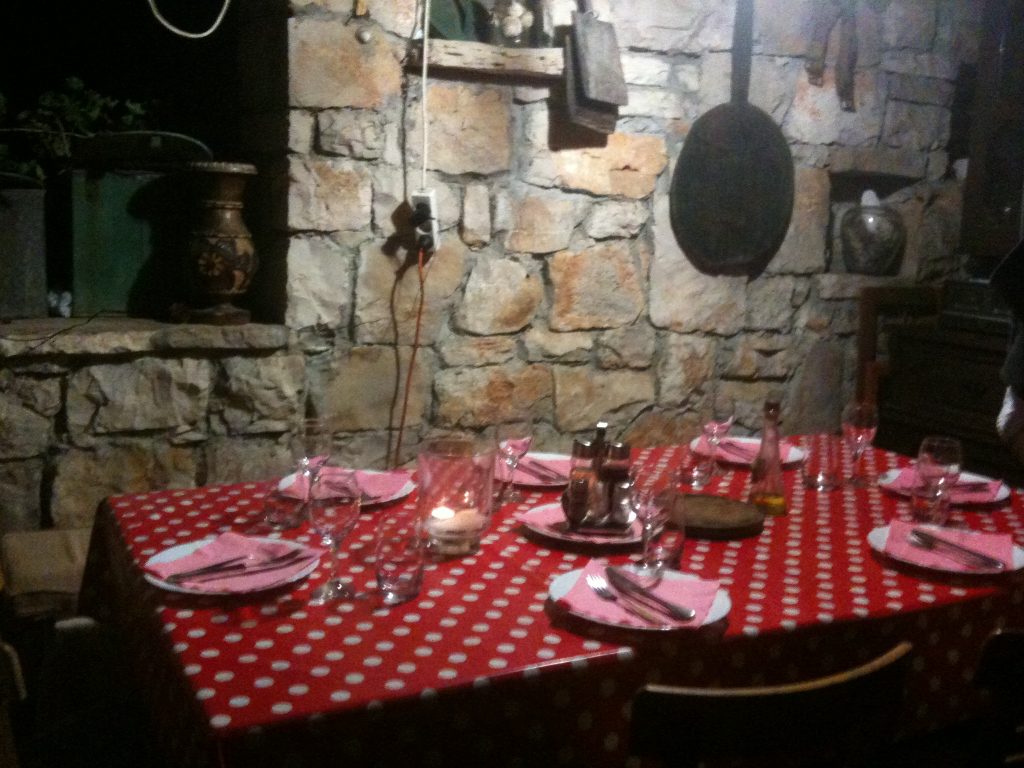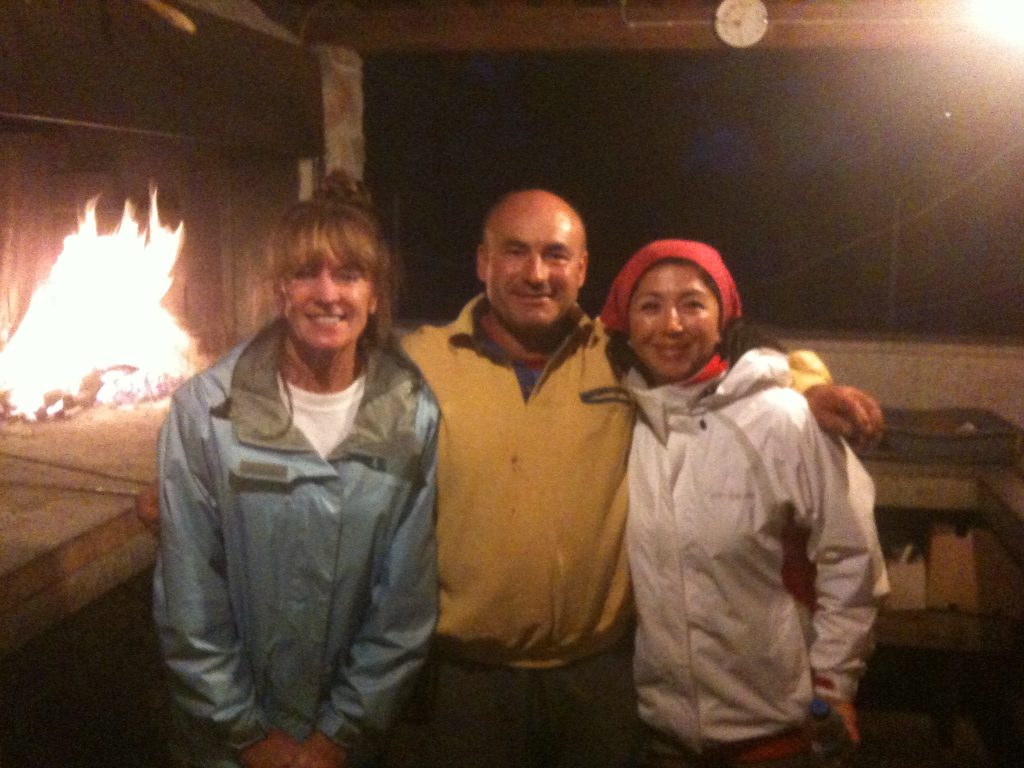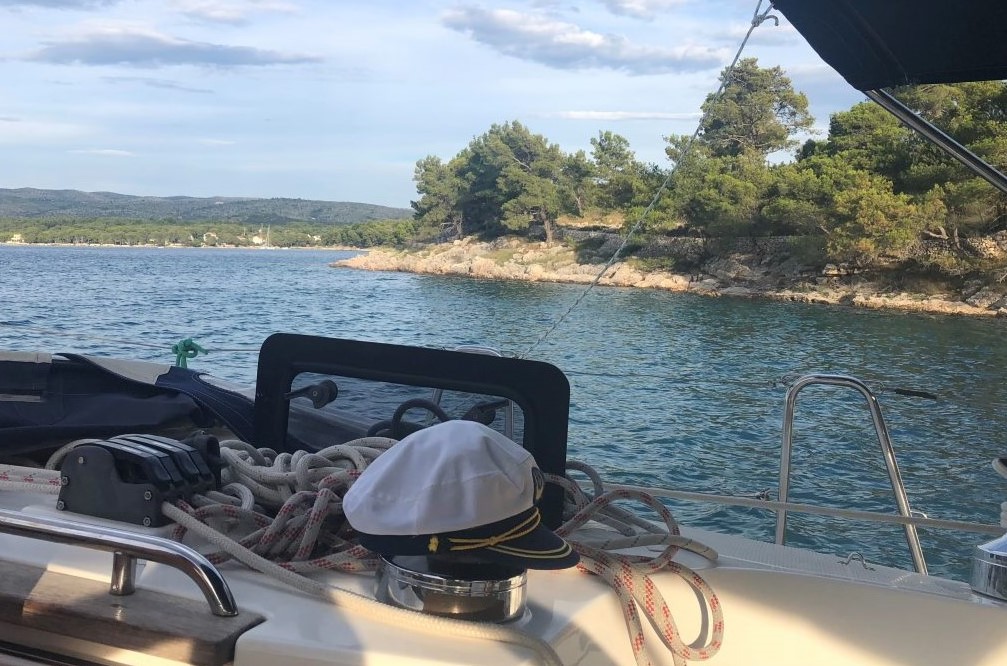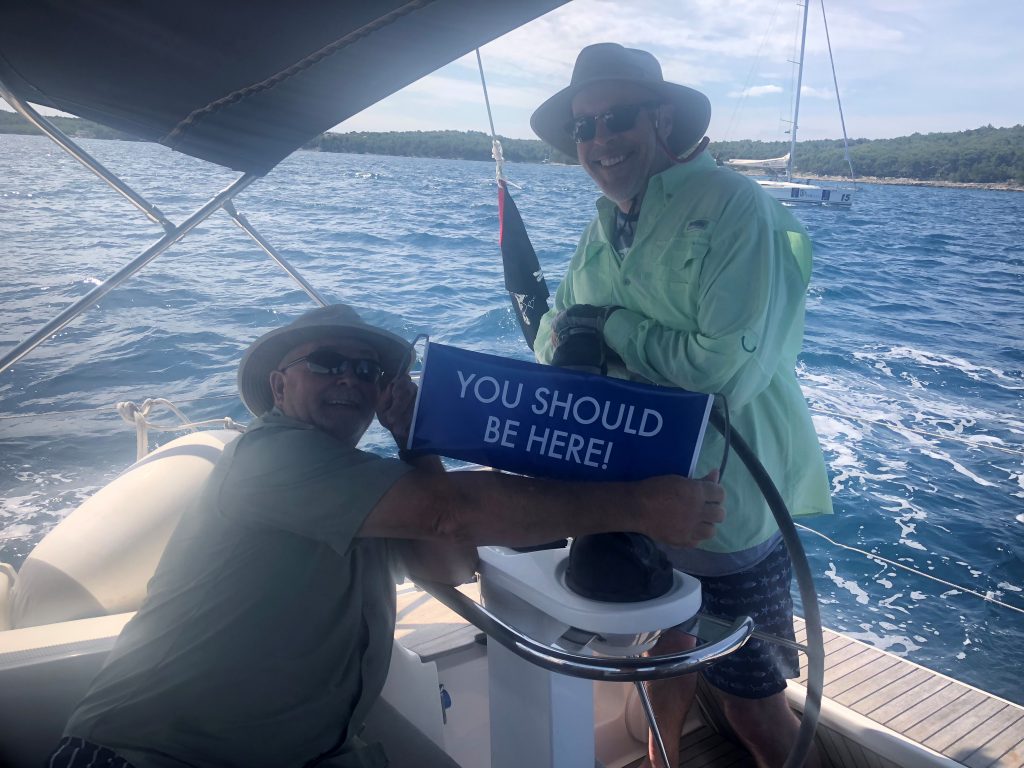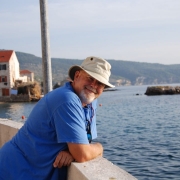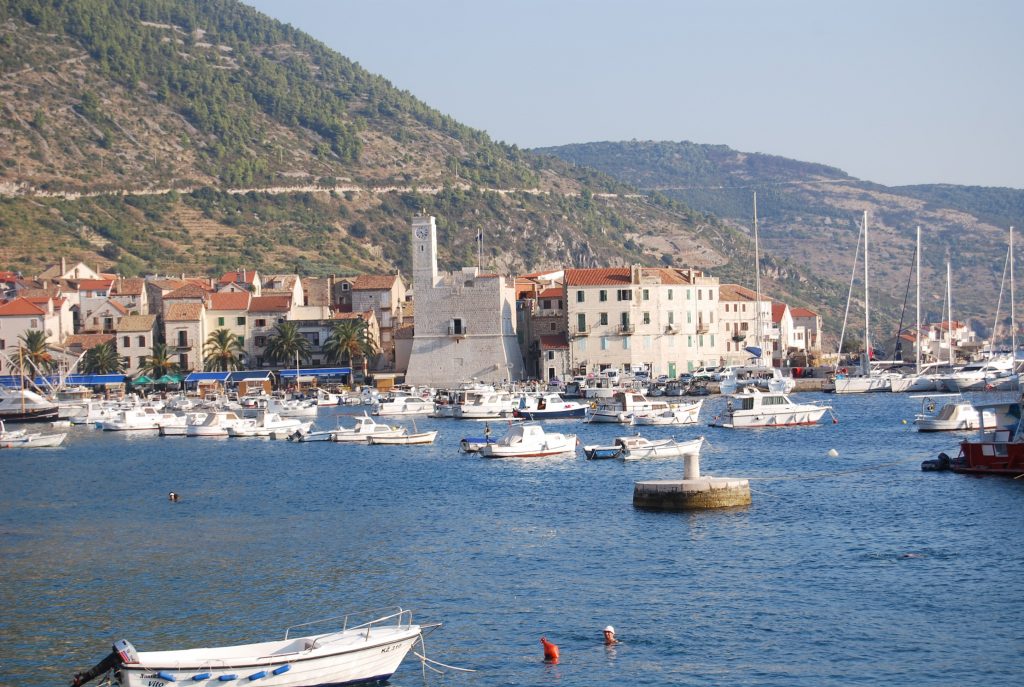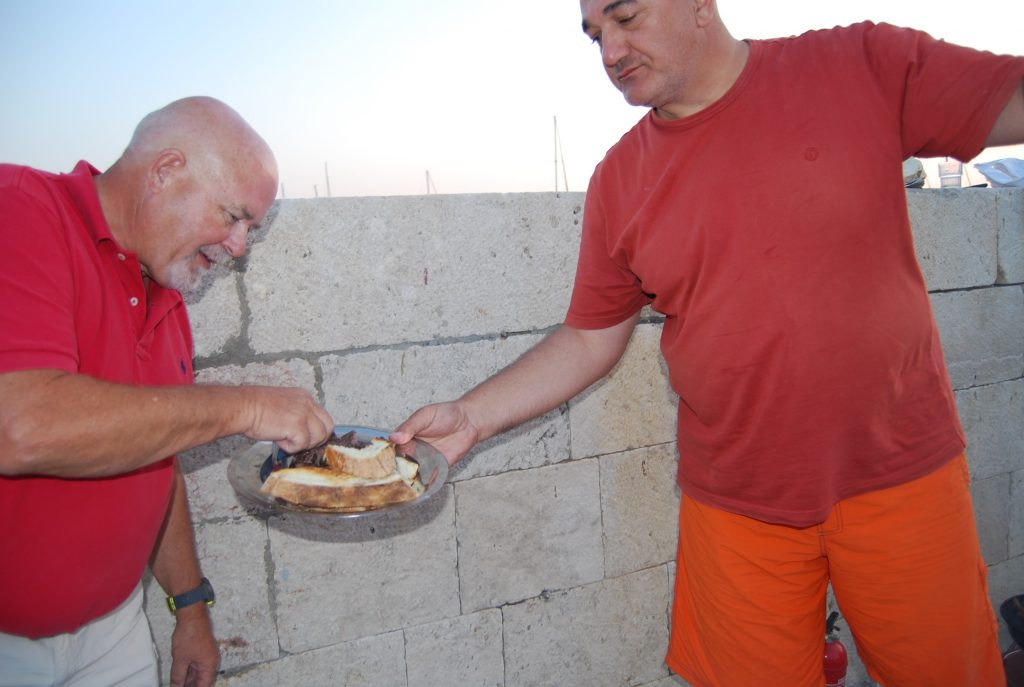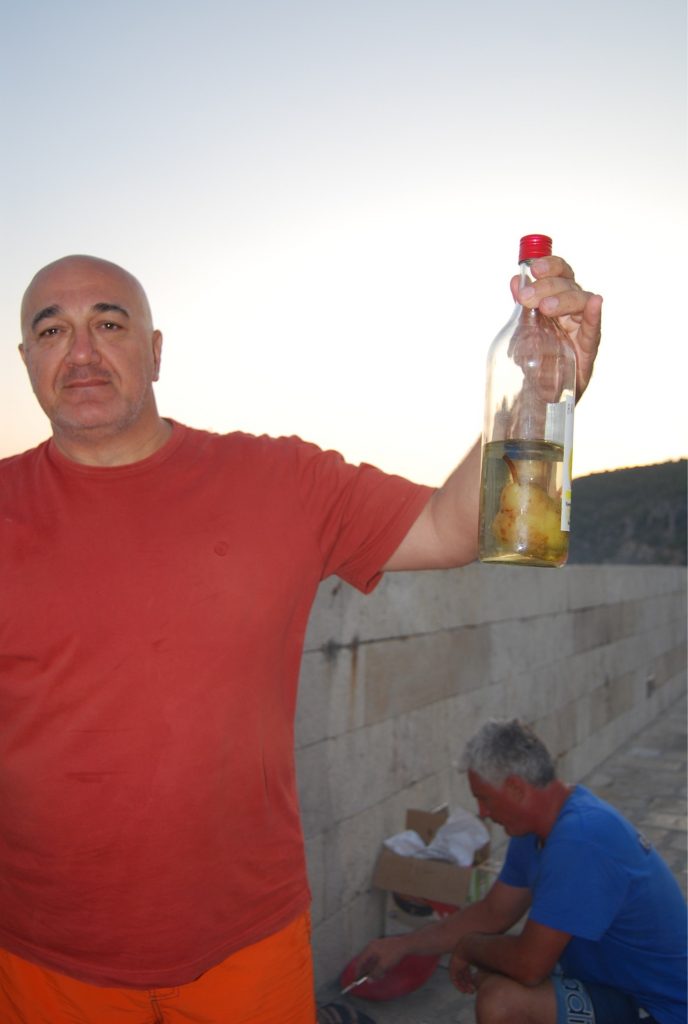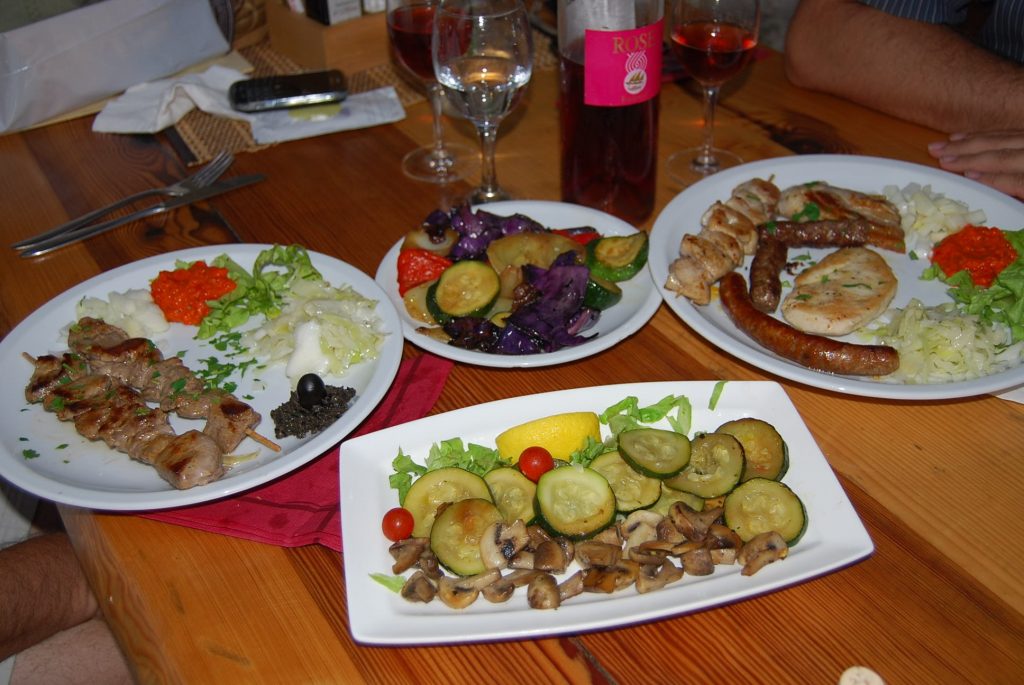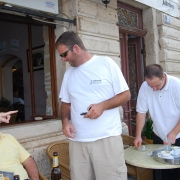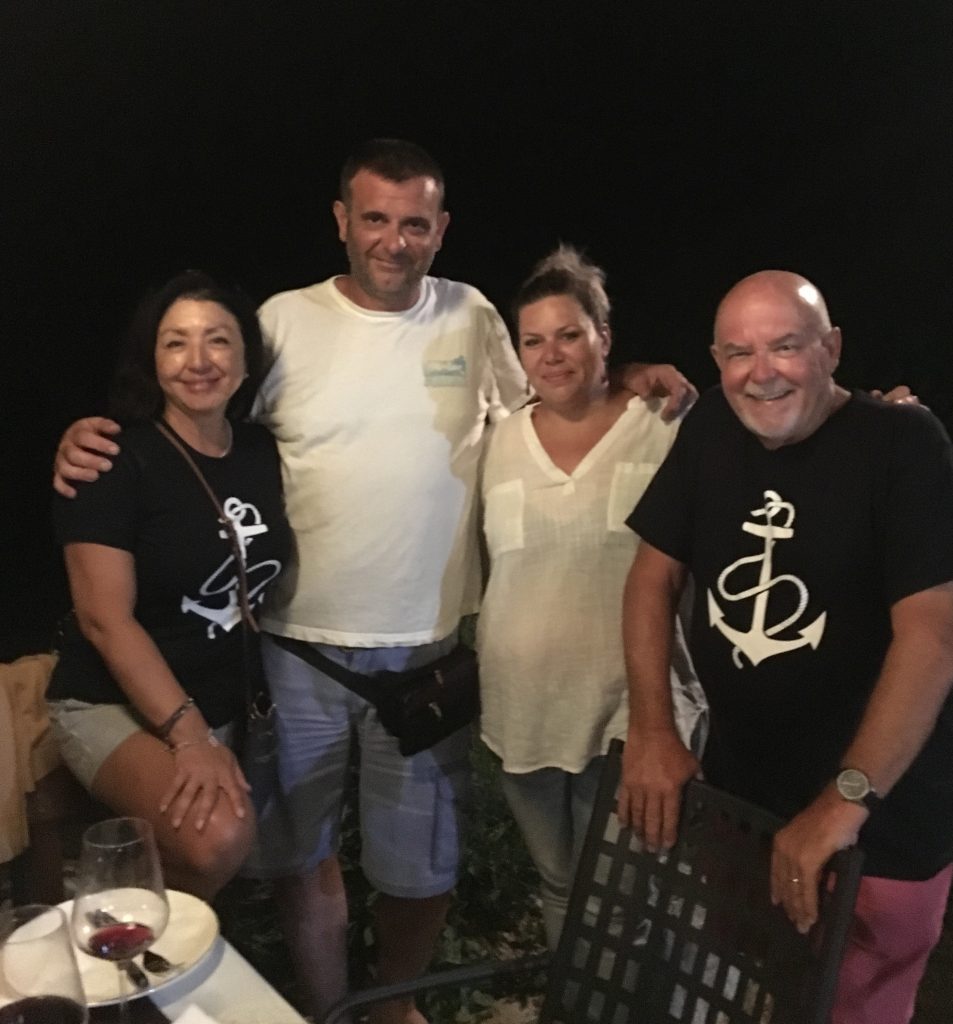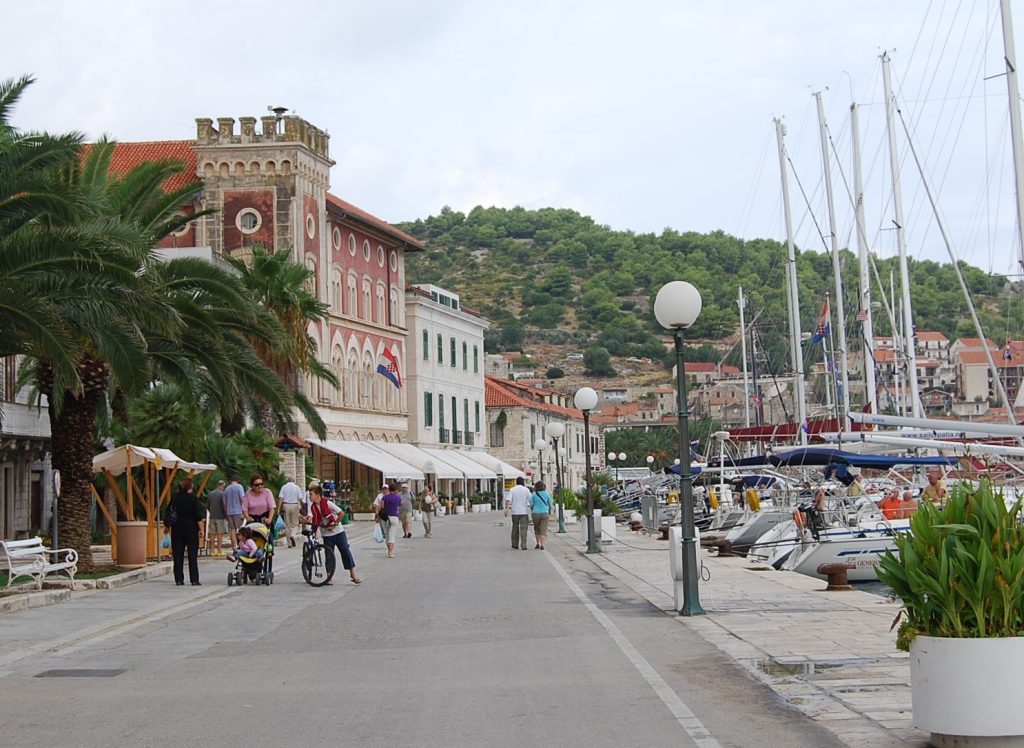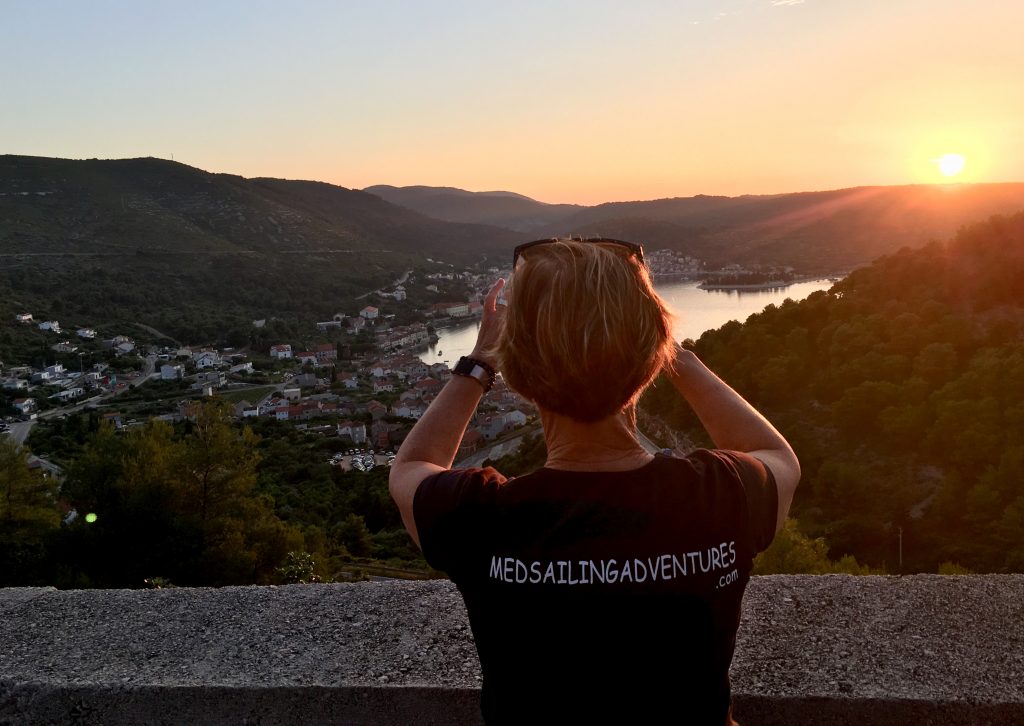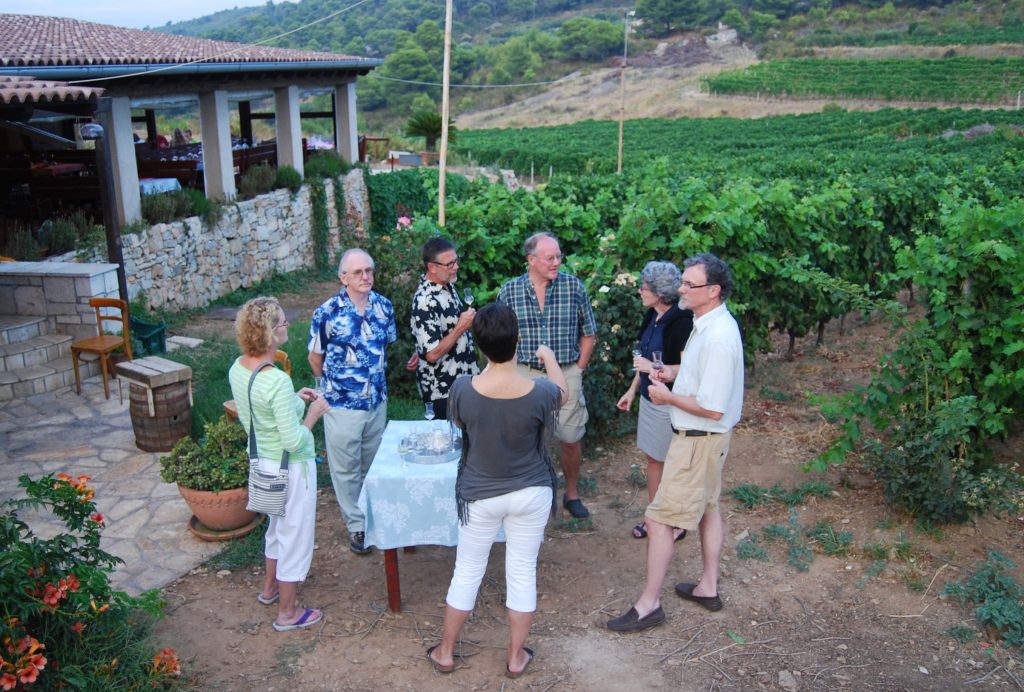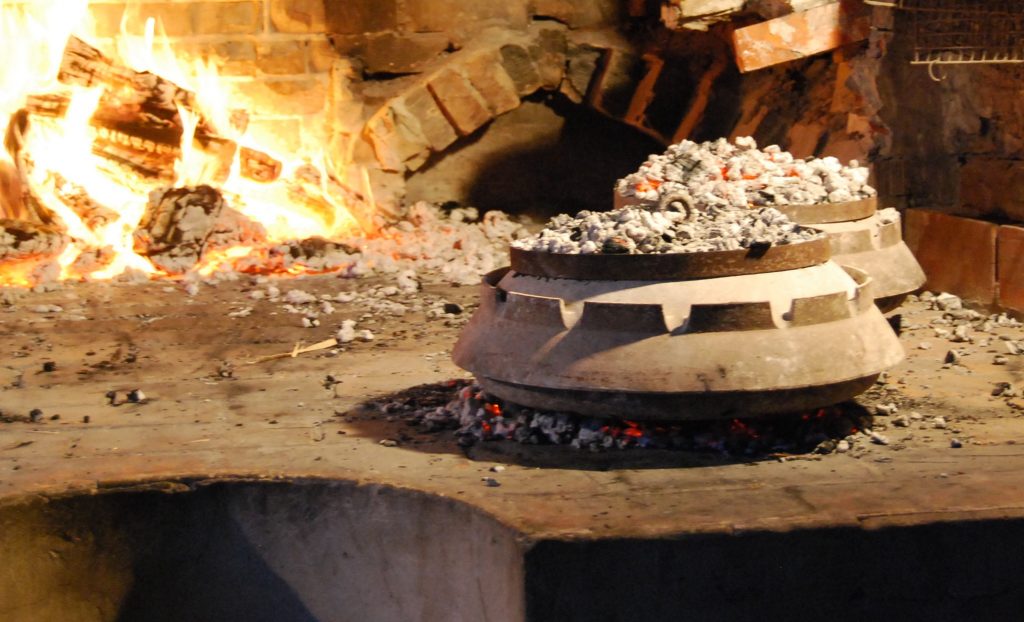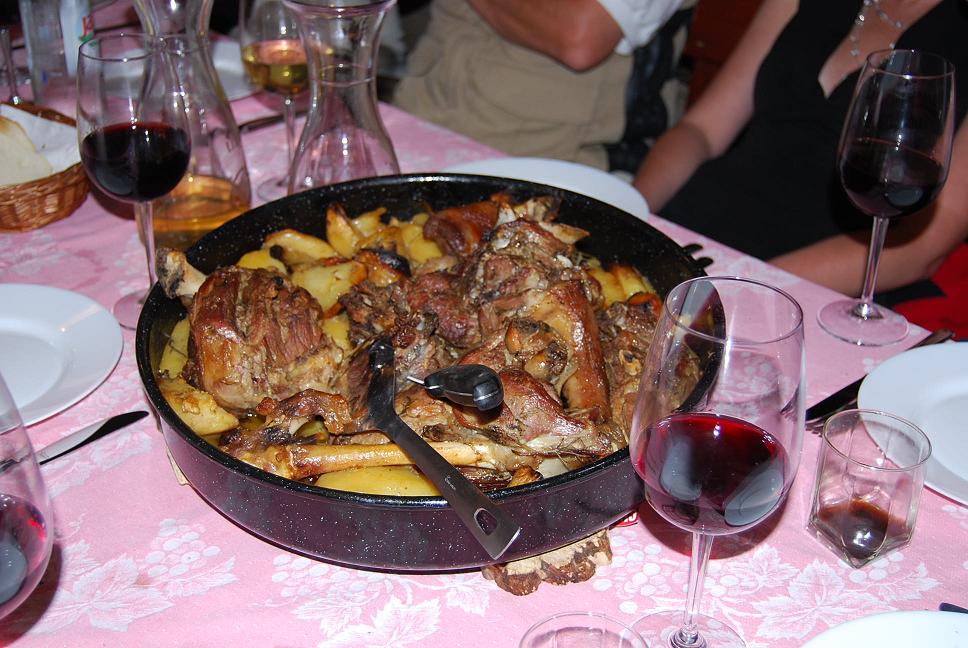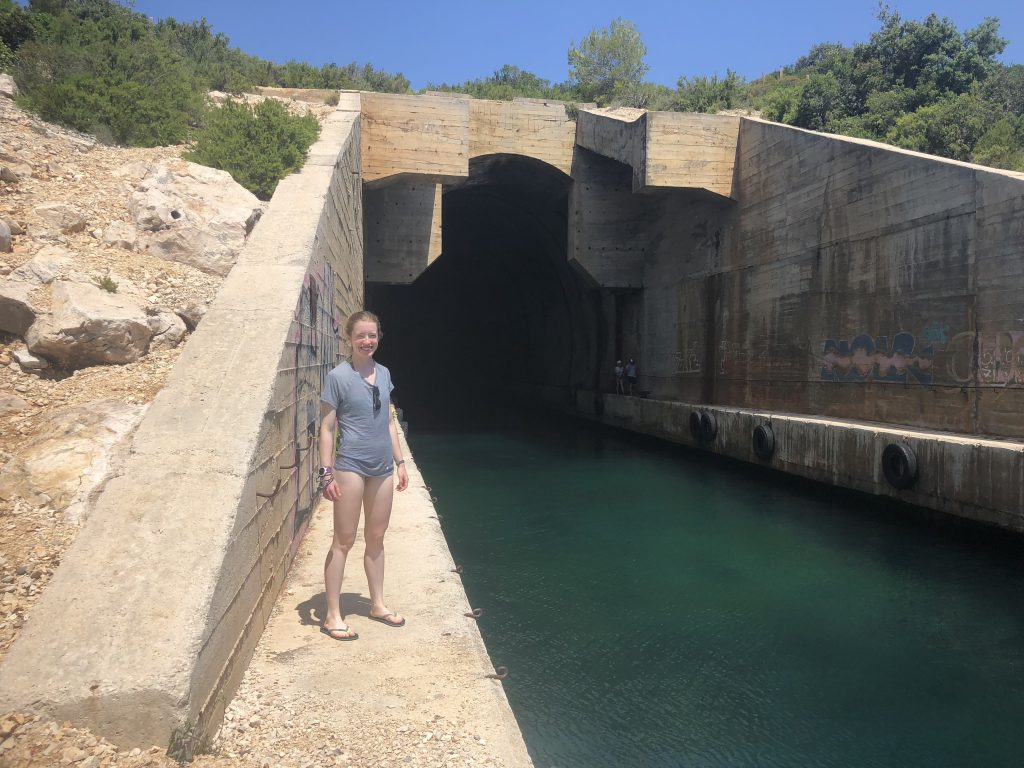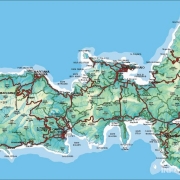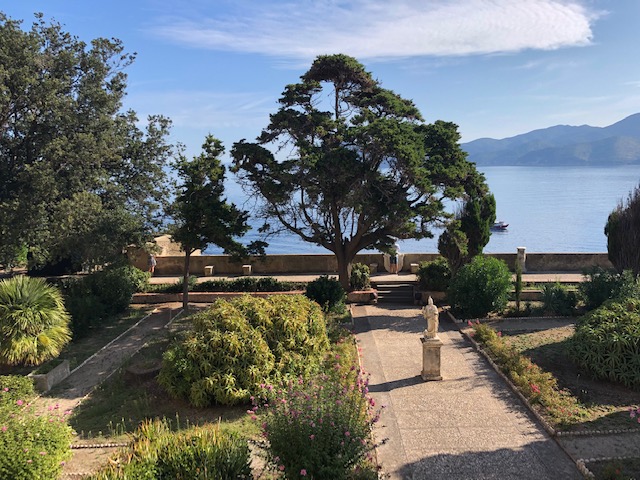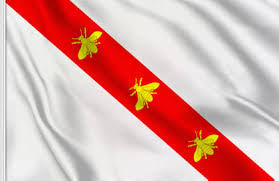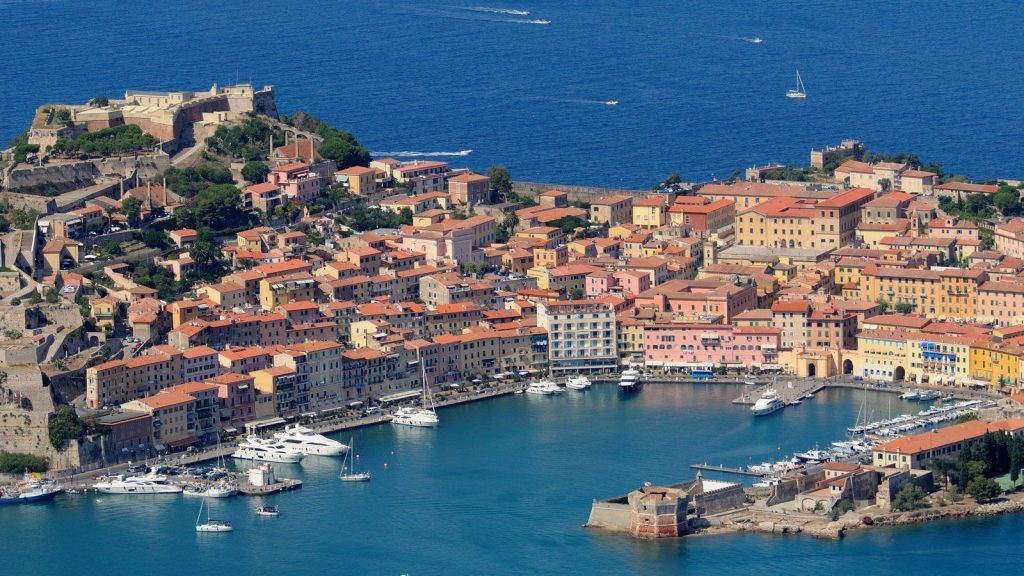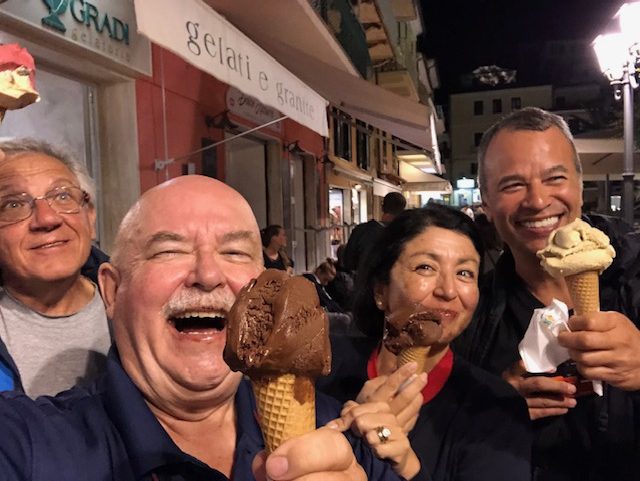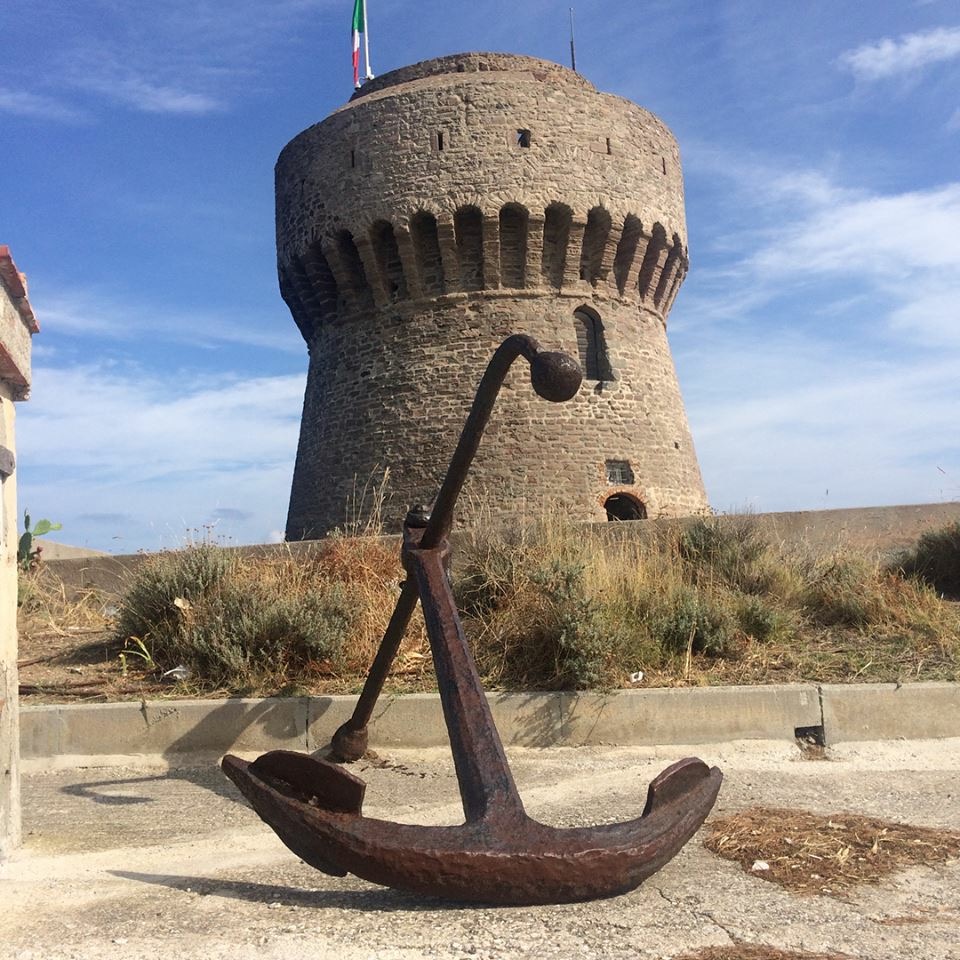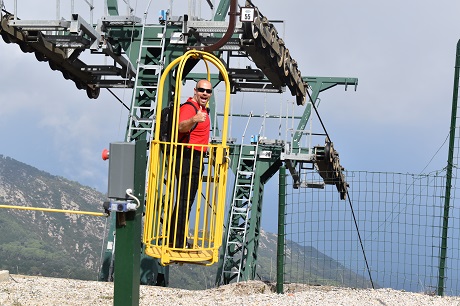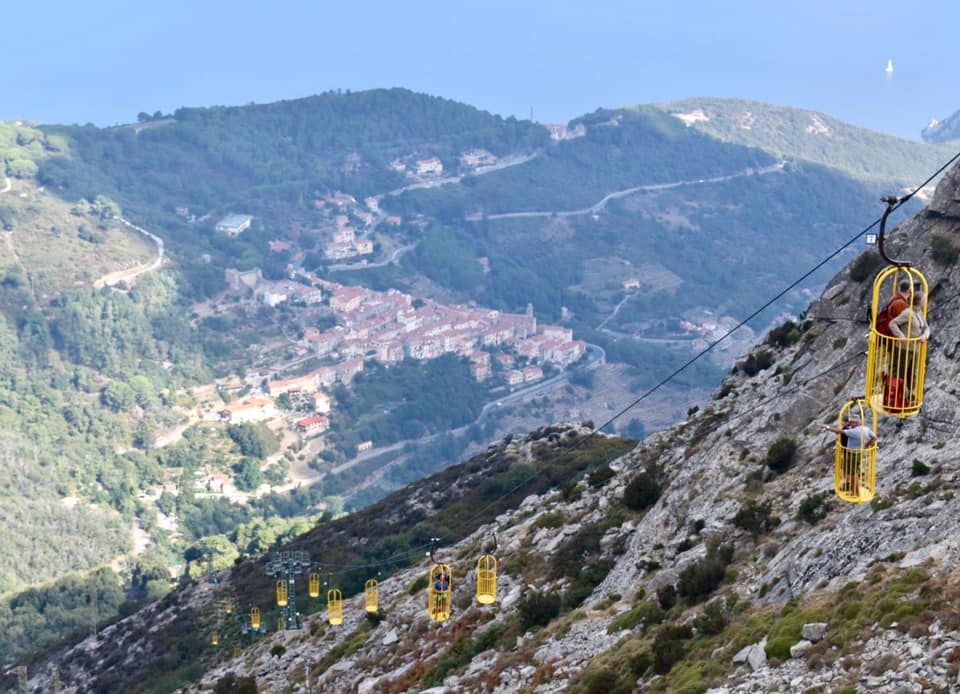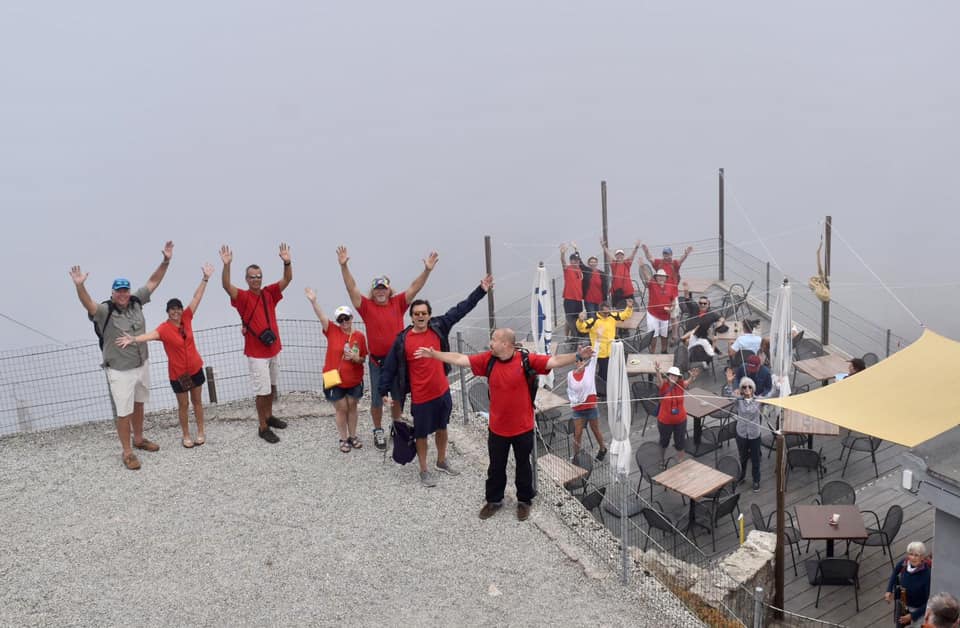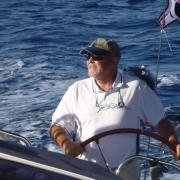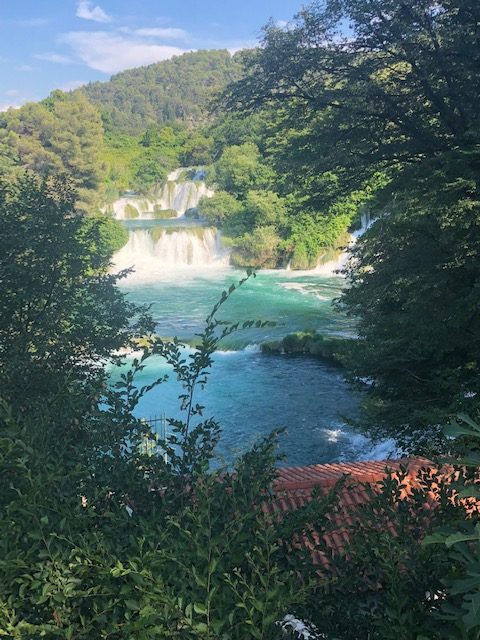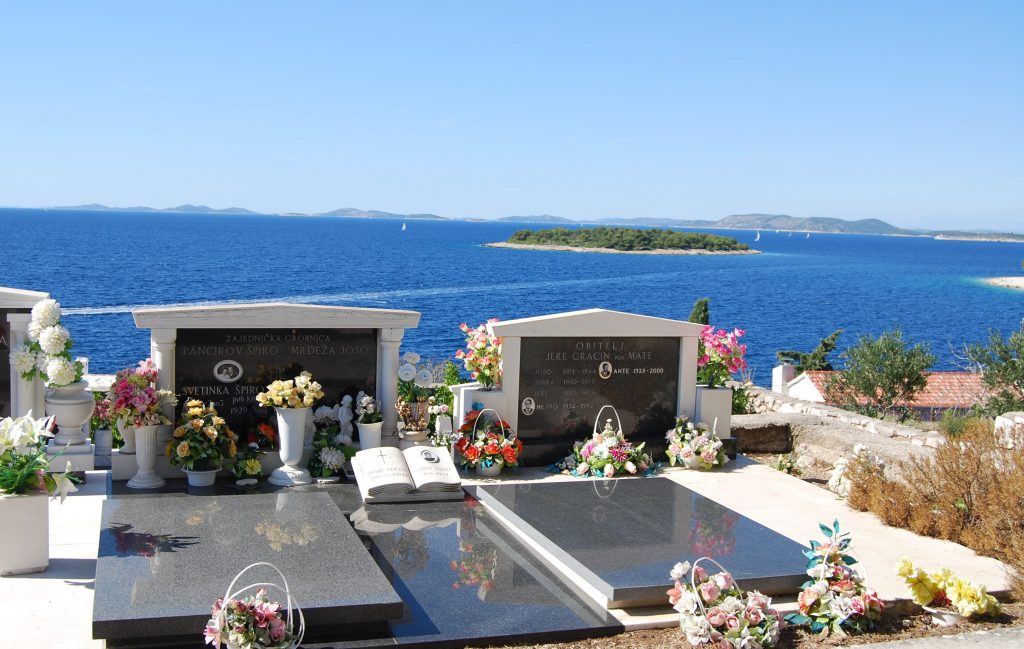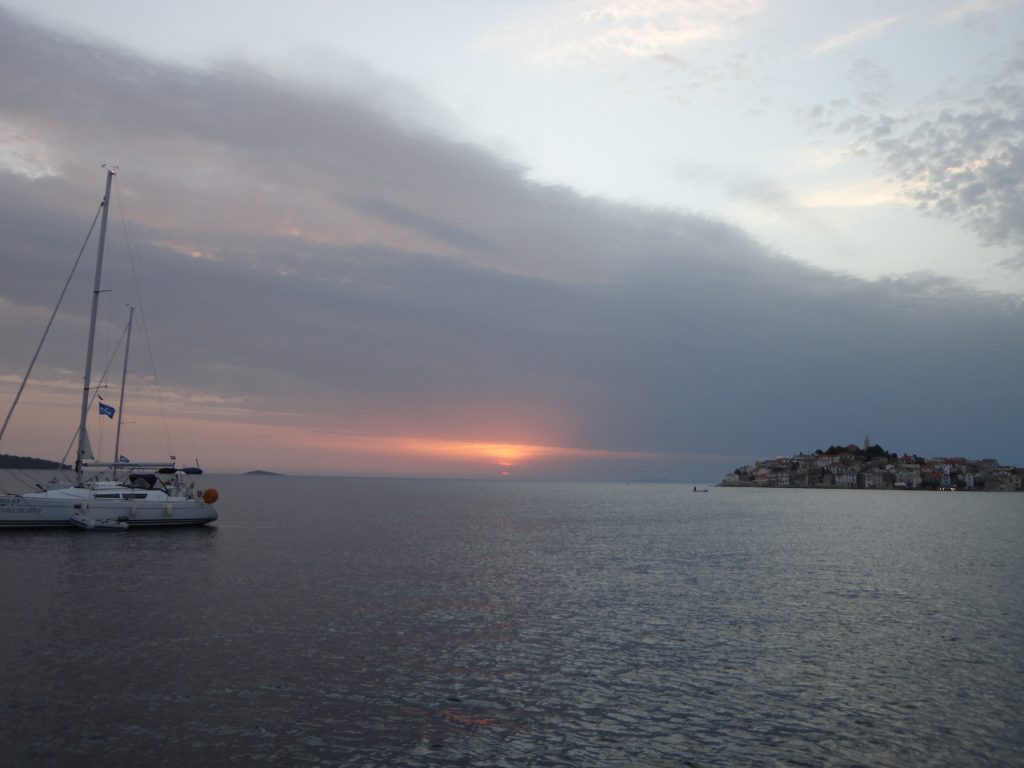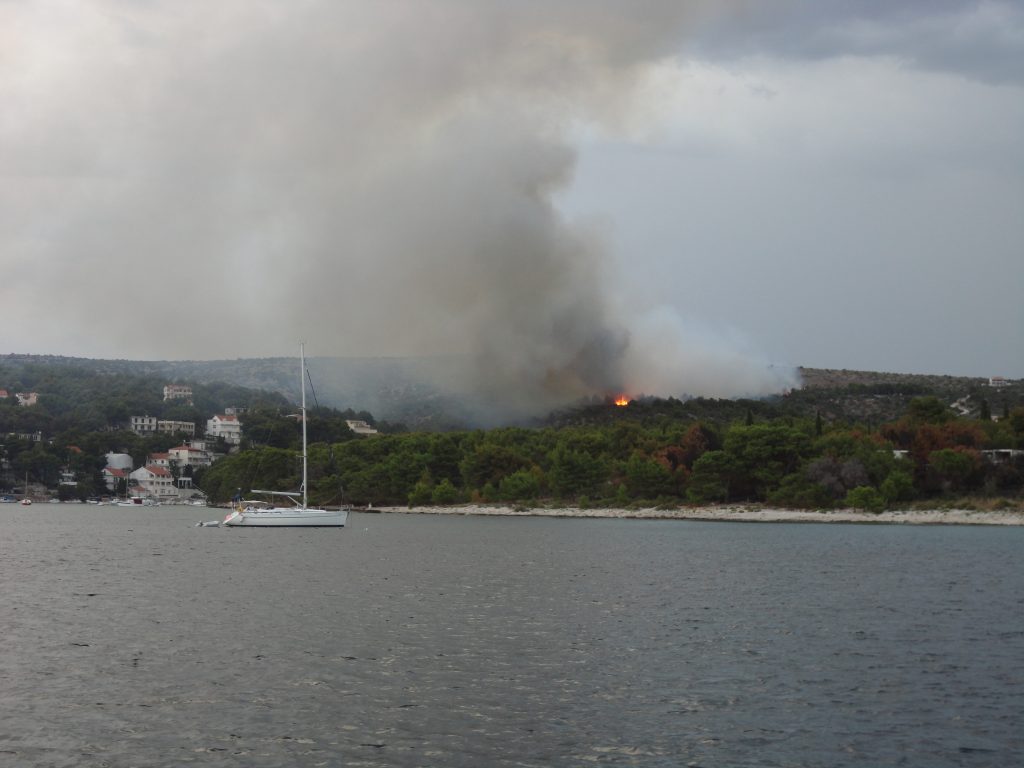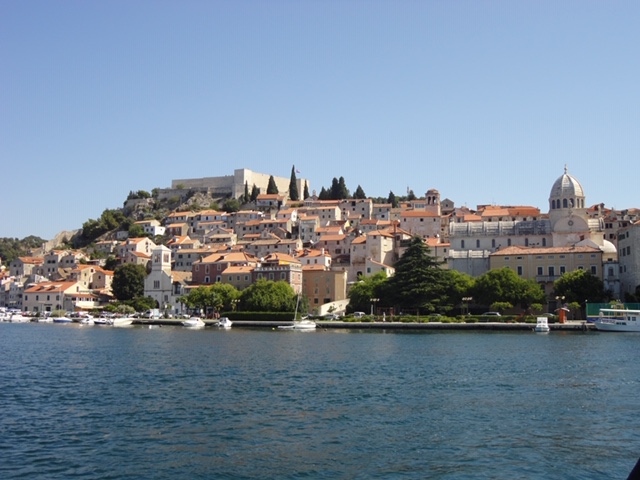After an eight-and-a-half-hour flight from Miami, Latam flight 8191 landed at Guarulhos Airport of Sao Paolo.
Getting our bags was a bit confusing as duffel bags were delivered on a different carrousel than for regular suitcases. Immigration and Customs were only a mere formality and soon we headed to the door marked “Saida” or “Exit” where our driver was waiting for us to start the four-hour drive to Paraty.
In no time, we were on less congested roads with large and small farms dotting the landscape. We drove on the highway linking Sao Paolo to Rio De Janeiro but, after about two hours, we took the two-lane road heading straight towards the coast to Ubatuba and our final destination of the day, the historic colonial city of Paraty.
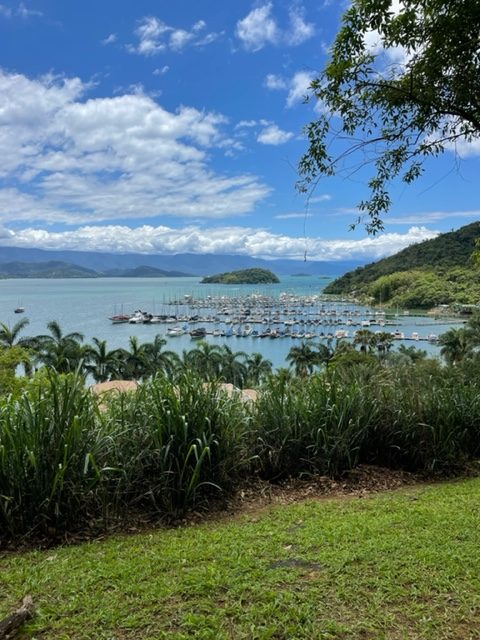
350 islands and even more beaches waiting to be discovered
The views of the sea from the road were spectacular and gave us an idea of what we would be experiencing in the week to come.
We came here on an invitation from Wind Charters who were putting a Brazilian-made Delta 41 sailboat at our disposal to discover the area with the idea of promoting this destination with American sailors.
We had invited long-time flotilla supporters, Kevin and Delana from Oklahoma, to join us on this adventure. Med Sailing Adventures was about to become a South Atlantic Sailing Adventure.
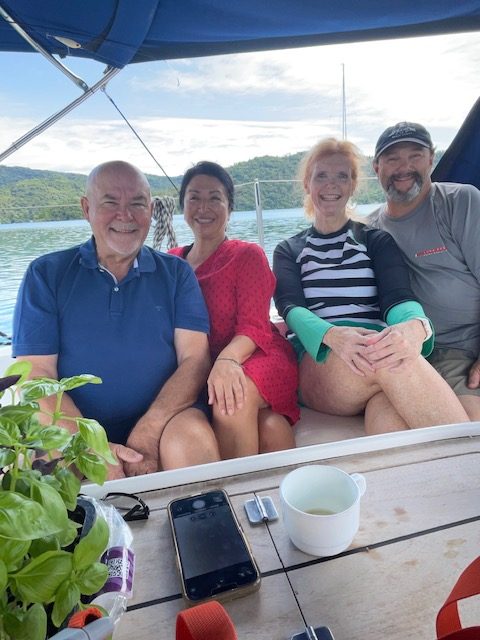
Our crew for the week
After having checked in at our hotel, Pousada Bartolomeu, in the Old City of Paraty and, after a quick shower, we went for a walk and lunch in this UNESCO Heritage Site of Humanity.
Paraty was founded in 1597 by Portuguese colonizers who built a port here to ship riches from the hinterland, like gold, precious stones and silver, to Portugal.
The city was built in typical Portuguese colonial architecture and, according to some locals, looks like what Lisbon must have looked like many centuries ago. Well, kind of…
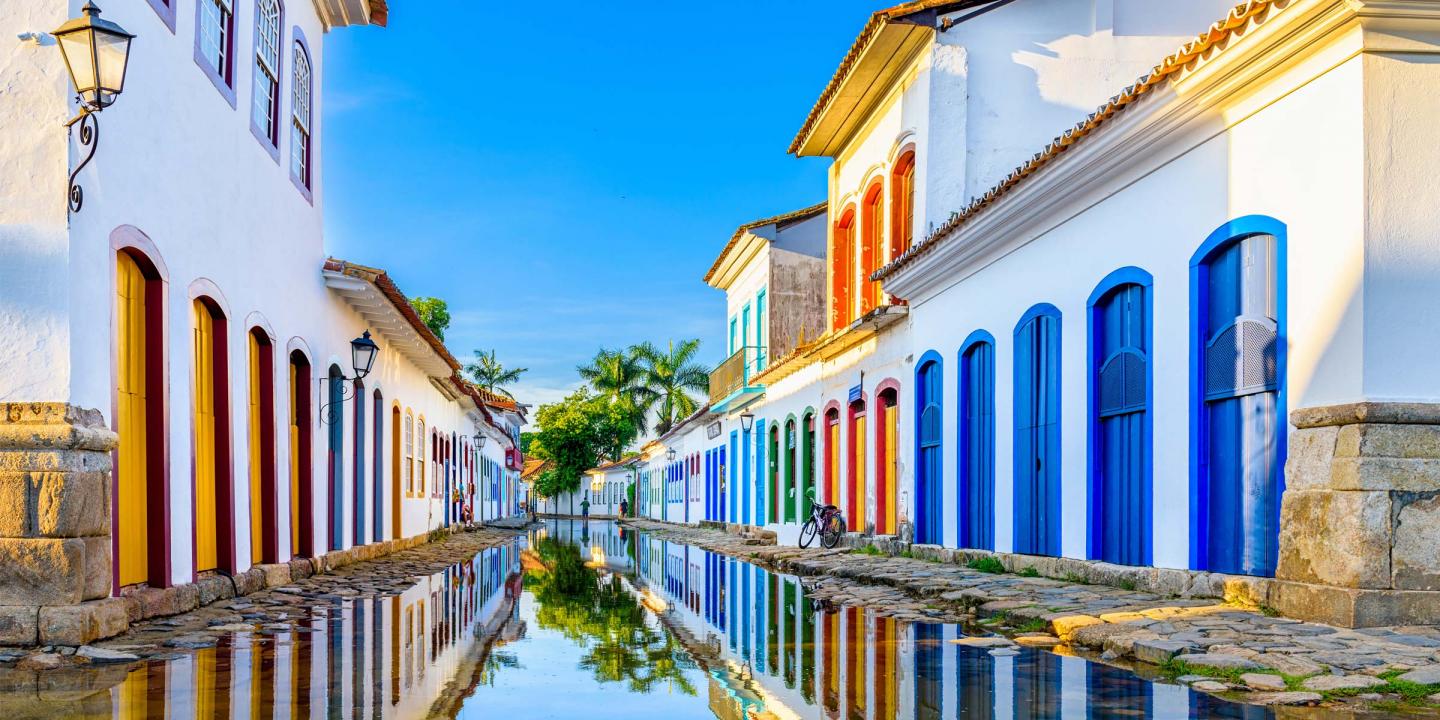
Street cleaning in progress
The streets of the old city are paved with huge cobblestones, real ankle breakers, and you have to watch carefully where you step in order not to end up with a strained ankle. Colorful houses line these streets and were once the homes of the rich. Of course, in those days, sewage systems were nonexistent, and the streets would end up being a disease-causing mess. Not to worry too much though. They had figured a way to solve the problem. Twice a month, at the new moon and the full moon, the tides would cause the seawater to flood the streets of Paraty and, when they receded, flush all the garbage in the bay. Et voilà… Problem solved.
Nowadays, the area is a popular attraction and tourists from all over the world come to visit it, enjoy the tropical surroundings, the hundreds of neighboring islands with white sandy beaches and warm waters.
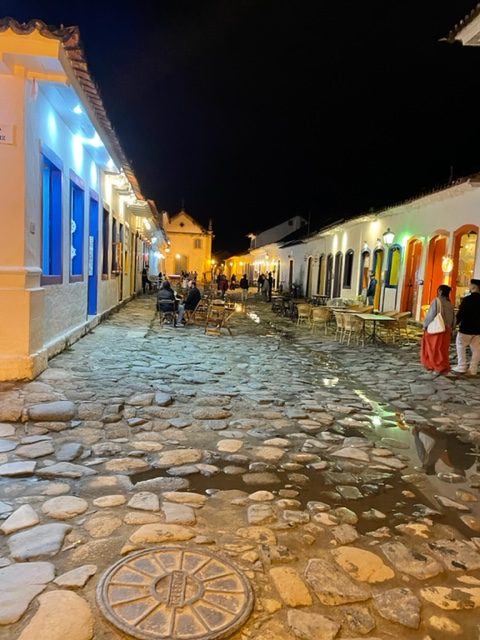
Paraty “by night”
The antique houses have been converted into bars, restaurants, art galleries and souvenir shops and the Old Quarter has become a very lively place.
After navigating the cobblestones, the size of small boulders, we found Banana da Terra, an inviting restaurant with a beautifully decorated patio covered in ferns and orchids.
As we were going to have dinner that evening with the owners of Wind Charter and their staff, we opted for a light lunch. I had an appetizer of scallops and The Admiral a crab soup.
Paraty is known for its Cachaça, or alcohol distilled from sugar cane juice, and they make several types of derivative drinks and cocktails with it like Gabriela, Caipirinha and Jorge Amado. I had a Jorge Amado with my meal. A mixture of passion fruit juice, lime juice and Gabriela, it is deliciously addictive but quite treacherous.
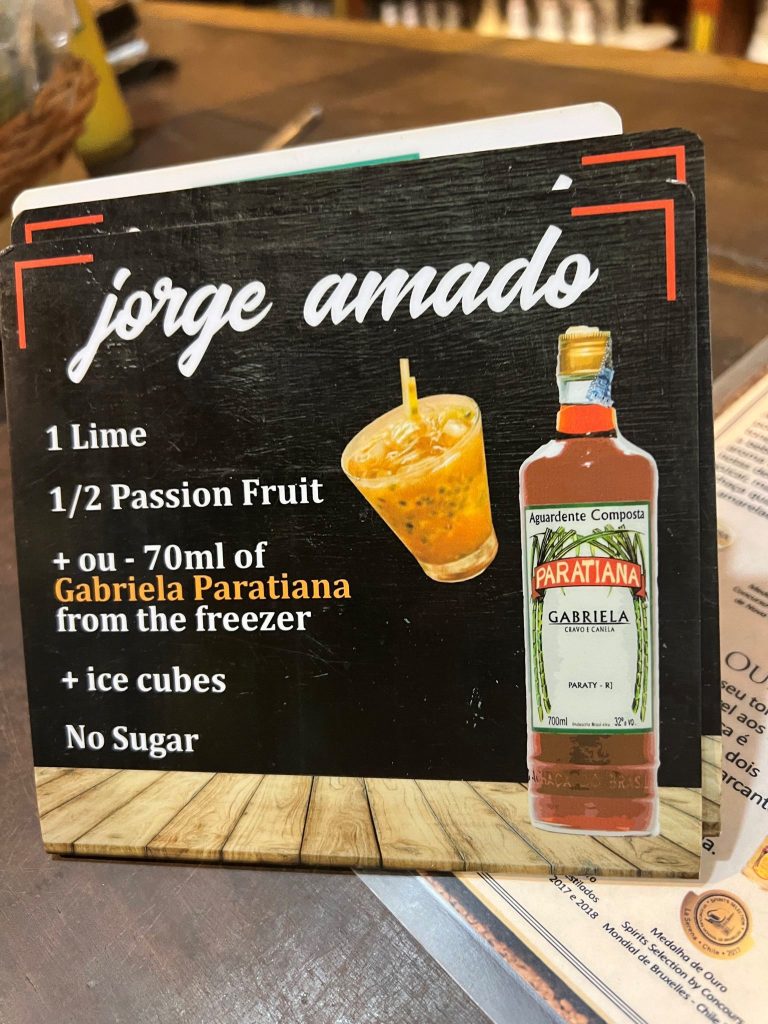
You now know how to make it, but you will have to join our flotilla to get the Gabriela…
Lunch over, we met with Kevin and Delana who were staying at the Casa Simone Pousada, around the corner from our hotel, and went for a walk that inevitably ended up in a bar where we had, you guessed it, Cachaça and Jorge Amado. We texted Mariani, the Sales Manager of Wind Charters to join us but she arrived too late for the drinks.
Around 19:00, the owners of Wind Charter, Guilherme and Germano, joined us and we went for dinner at Rio do Ouro, another great eatery in town.
The delicious food and the Caipirinhas helped make the ambiance a lot of fun. Our Portuguese hosts were fluent in English which was definitely better than our Portuguese, although with my Spanish and French, I can read and understand it.
Having said that, we were able to communicate during the week, using a mixture of Spanish, French with plenty of hand gestures.
The following morning, Mariani and Karine came to pick us up with two small cars and, while Mila and Delana went shopping for provisions, Kevin and I got introduced to the Delta 41, our home away from home for the next seven days.
Wind Charters is a good-size company with sixteen yachts, mostly Brazilian-made Delta sailboats in the 37’ to 41’ range. They also have a couple of Lagoons and a Brazilian-made Cat-Flash 41 sleek-looking catamaran that really impressed us. I will definitely want to skipper that beauty when we come back for a flotilla event.

Who wants to join me on this sleek cat?
The marina is modern, clean and located in a gated community. The staff members of Wind Charter are efficient and knowledgeable, but English is not their forte, which could create communication problems when checking in. Fortunately, Marcos, our technician had a very good knowledge of Spanish, and we had no problems understanding his instructions.
As soon as Mila and Delana got back from provisioning (they forgot the beer!), we dropped the lines and set off for our Brazilian adventure. Our destination for the night was a peaceful anchorage on Ilha da Cotia. Several sailboats and smaller motor yachts had preceded us, but we found a secure place to drop the hook. It was now getting dark and time for a Jorge Amado…
We cooked a tasty spaghetti, without meat (forgotten with the beer) and a bottle or two of red wine.
Life is good. Time to go to bed but a little drama pushed our bedtime a bit back.
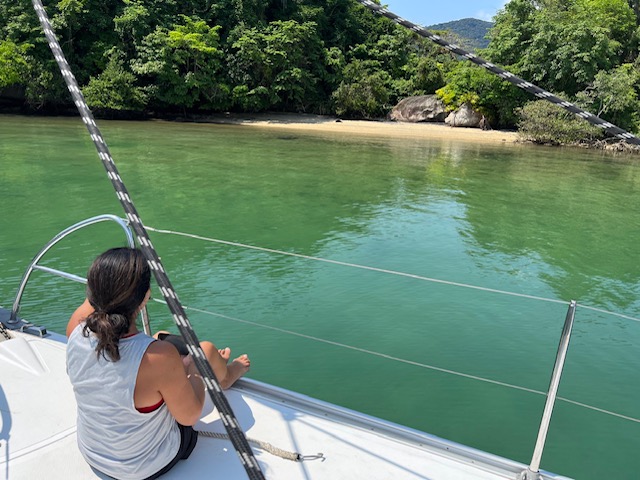
The small beach of Ilha da Cotia
We were sitting in the cockpit having a bit of Cachaça, for medicinal and digestive purposes of course, when we noticed a boat dragging her anchor and heading our way at a fast clip. No crew members to be seen. They were already tucked in for the night. We started yelling to attract their attention and had roving fenders ready. About another hundred yards away from us, crew members on another boat started yelling too. Finally, the crew of the wayward yacht came up from below, but they had no clue what to do.
First, they shouted back at us that we were moving and not them. When they saw that they were the ones drifting, and, when they realized what was going on, they were in total panic on how to handle the situation. They had booked a crewed charter but, at the end of each day, the skipper would secure the yacht for the night and the charter company picked him, leaving the customers with their privacy. Without the skipper on board and with no sailing experience, they were floating further away towards the rocky shore.
We yelled for them to start the engine so they could raise the dragging anchor. Just in time, before hitting another yacht, they were saved by the crew of the other boat who had come to their assistance with their fast RIB.
After they had been safely anchored, the cove turned quiet, and everyone got a well-deserved rest.
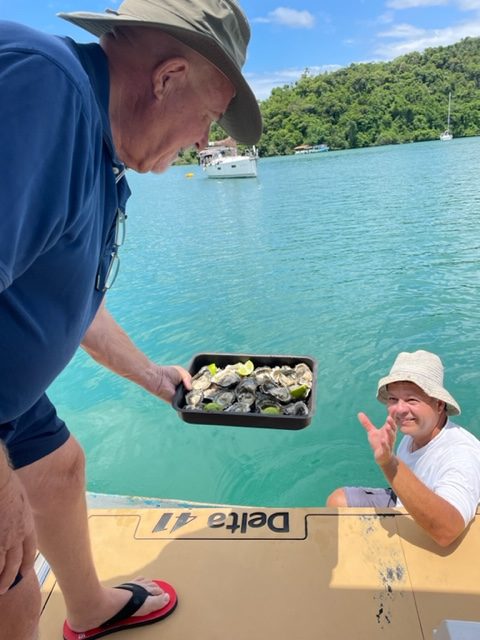
The freshest oysters you can buy
The sky was sunny when we woke up on Sunday and, while we were enjoying a late breakfast in the cockpit of our Delta 41, Malicia, a local fisherman paddled by in his dugout and offered to sell oysters. We ordered two dozen, which he shucked right there in his canoe. They were oh so fresh and the whole thing cost us about $15.00. What a deal…
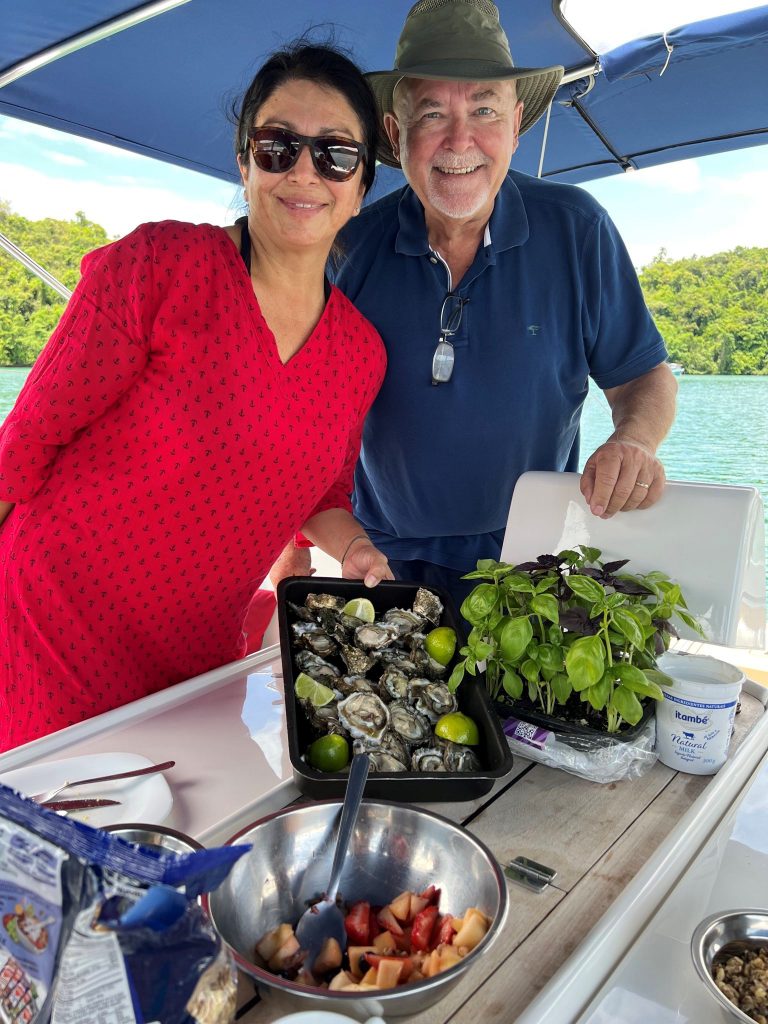
Living the dream!
The skiff from the charter company came by to drop off the skipper on the wayward yacht and we explained to the company rep that the skipper had not properly anchored his yacht before leaving for the night. I guess he must have gotten quite an earful afterwards.
From Ilha da Cotia, we sailed to the other side of the bay of Ilha Grande to the small island of Cedro for a swim and lunch at the beach restaurant of Bar do Coqueiro. We had delicious empanadas and a large bowl full of small fried shrimp, of course all washed down with numerous delicious Cachaças and Jorge Amado cocktails.
We took in the scenery and pushed the little daughter of the owner on her swing but, with no beer, bread or meat on board, we needed to go to nearby Saco de Tarituba and its small fishing village where there are some provisioning possibilities. Kevin, Delana and Mila paddled to shore in the rain to buy whatever was available in the small store. We had some snacks, cheese and wine for dinner and decided to spend the night at anchor among the local fishing boats.
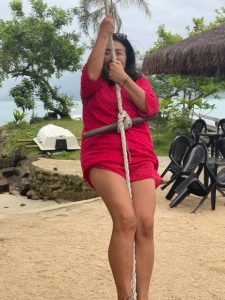
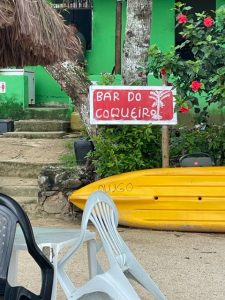
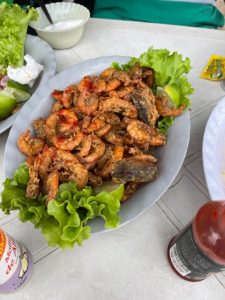
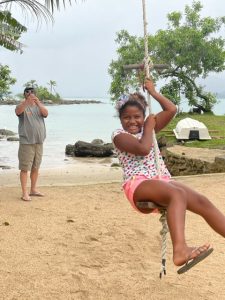
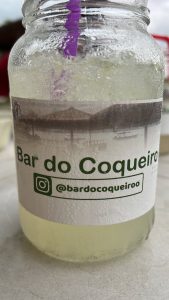
The following morning, Monday, November 7. Kevin and I paddled to the shore in search of additional food. We found wine, pasta, bread and some veggies and were directed to the local fish store where we bought two beautiful snappers and more shrimp. The fishmonger cleaned and fileted one of the fish and removed the scales and innards of the second one. The filets ended up as a delicious ceviche, prepared by Kevin, for lunch and the whole snapper was destined for the grill.
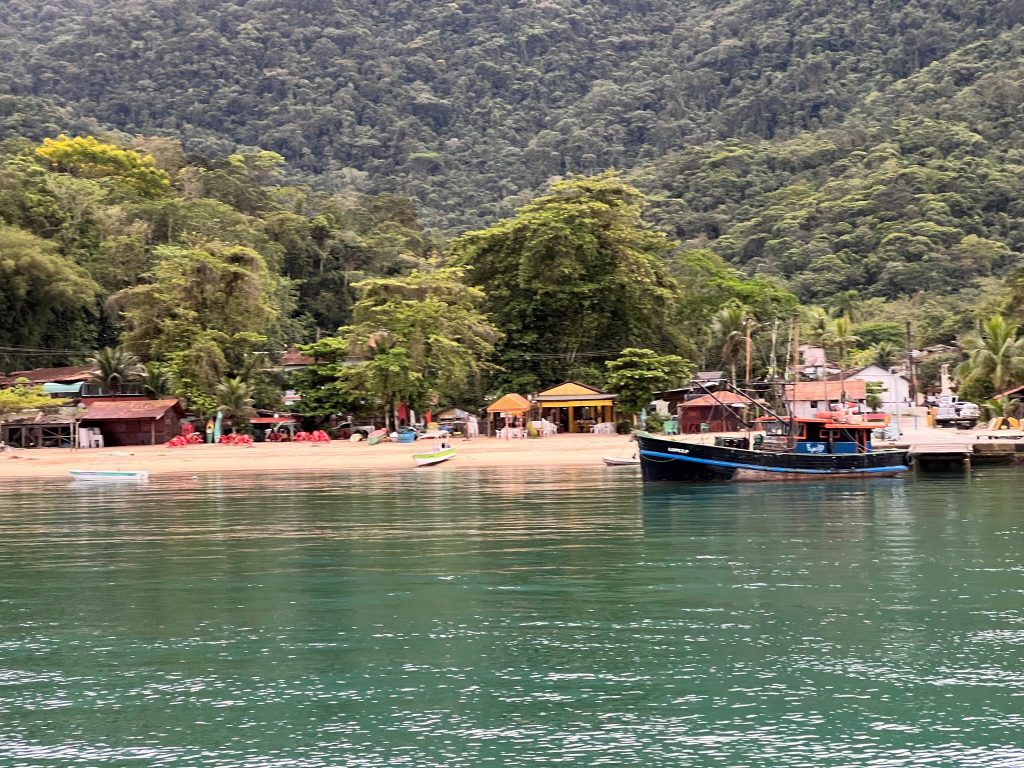
The picturesque small port of Tarituba
You have read now twice that we had to paddle our dinghy. Well, the yacht came without an outboard engine, but we got a rail-mounted grill. Unlike the Magma grills in the U.S.A., the grill here was not propane-powered but worked on charcoal. So, we had to light charcoal with alcohol and waited for it to heat up sufficiently to grill on.
After our shopping was done and we were back on the yacht, we pulled the anchor and motor sailed, sometimes in brief rain showers, to the small bay of Piraquara de Dentro.
This bay is very well protected from winds from all quarters but, as our water tanks were getting low, we opted to go to nearby Porto de Frade, a luxury resort with a well-equipped marina. There was no dock space available, and we got a buoy close to the entrance for the equivalent of US$40.00. Not a bad deal. Fortunately, it came with free water taxi service.
Rather than cooking on board, we opted for dinner on shore. The restaurants in the resort did not appeal to us and we wanted meat. The concierge of the resort suggested that we go to Angra dos Reis, the main city of the region, twenty-four miles away, and recommended a steakhouse in the Mall of the Marina Piratas. I will agree with my fellow crew members when they say that the food was good, but I had expected a so-called churrascaria. Little did I know then that I would have more churrascaria than I bargained for during the following week in Rio de Janeiro…
On our way back to the marina, in the dark, our taxi was stopped by a police control with some mean-looking officers carrying menacing submachine guns. We must have looked honest because they let us through without even verifying our papers.
Our water taxi brought us back to our boat for a well-deserved night rest, of course after a Cachaça for digestive purposes.
The following morning, we went to the dock and filled up our water tanks and motor sailed to nearby Ilha Cunhambebe Grande, named after an Indian chieftain who revolted against Portuguese invaders.

Cunhambebe was one tough guy with a penchant for Portuguese human cuisine
The Indians massacred the foreign invaders and ate their bodies. The Portuguese did not let them digest this too well because they beat them and decimated Cunhambebe and his followers. They killed them all and that was the end of that revolt.
The island is beautiful with a very nice anchorage, but the rest of the crew was not as enthusiastic as I was, and we ended up in the anchorage of nearby Ilha de Itanhangá. We dropped the hook under the impressive sheer monolith of a rock. There was a floating bar nearby but nobody to serve us.
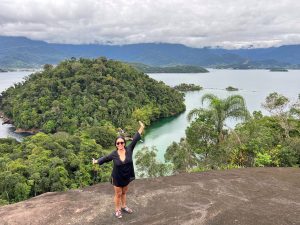
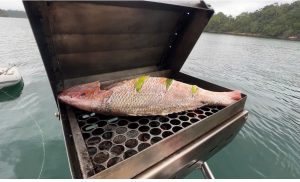
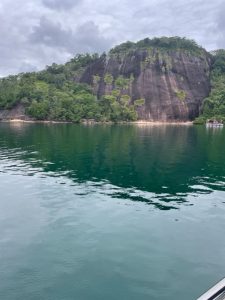
Kevin played with his drone for a while, recording video images that I hope to put online at some point.
Mila, Kevin and Delana paddled to shore and hiked a trail all the way up to the top of the monolith from where they had a spectacular view of the surrounding area.
That night, we had the snapper grilled on board and served it with a tasty pepper stew and Mila’s signature potato salad.
It was absolutely delicious. Thank Goodness, we had not forgotten to reprovision wine while at the Marina Frade resort. A bit of celebration was called for and Kevin and I sipped on some good tasting Cachaça and enjoyed great cigars. Life is good…
Wednesday morning, we woke up to sunny skies. As with every seven-day charter or flotilla, Wednesday is the day that we realize that our trip is almost over. Only two full days left after this. Truly a hump day…
A nearby beach, called Praia da Piedade has an adorable small white colonial church, right on the edge of the water. Several trails lead from there to nearby beaches on the island of Ilha Gipóia. Legend has it that island is haunted by the ghosts of the first adventurers who got marooned here.
Whatever the stories, it is a delightful place, worth visiting. We were anchored off the beach off Praia da Piedade and I decided to stay on the boat while the rest of the crew paddled ashore near the church. They followed a trail and, at the end of it they found (of course) a bar that served cocktails. Meanwhile I was doing anchor watch near an oyster farm.
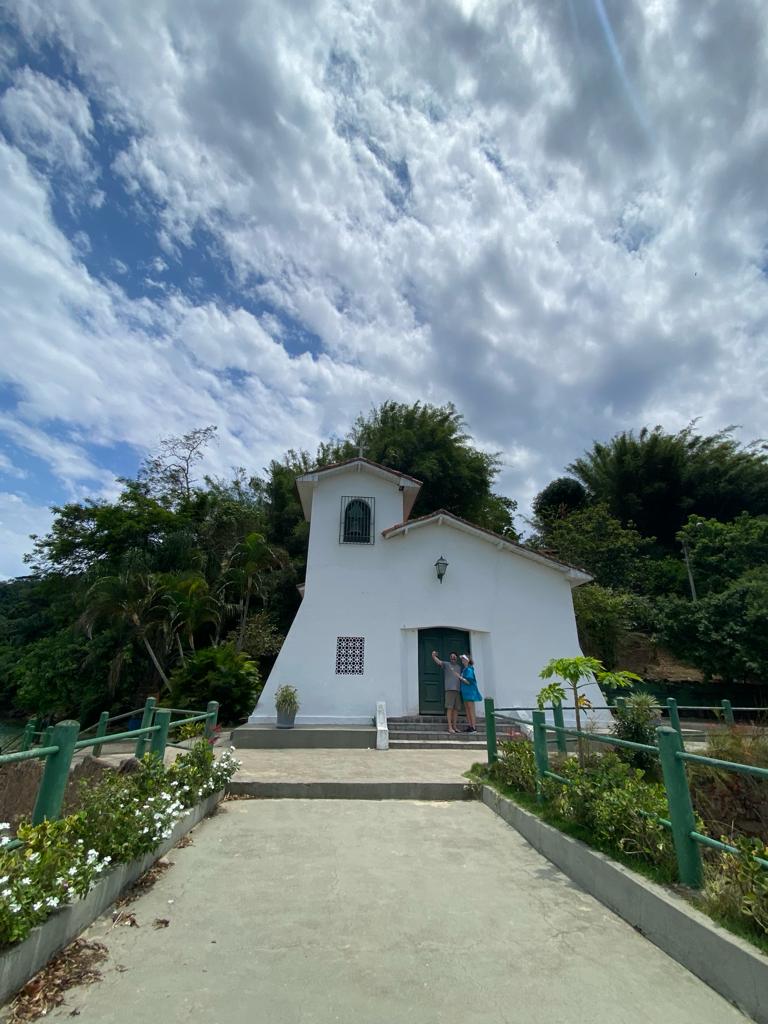
The adorable little church of Praia da Piedade. Are that two ghosts taking selfies?
Before sunset, we brought the boat to the northside of the small Ilha da Piedade and anchored for the night in front of the bar. Unfortunately, it is only open during the day. Apart from a few empty local skiffs and launches, we were the only boat in the anchorage. I cooked a Spanish-style Camarones al Ajillo dish of shrimp served with pasta. With no neighbors in the anchorage, we had a very quiet night.
And it is Thursday! Time to sail back to the other side of the Bahia da Ilha Grande and sail we did.
Before raising the sails, we stopped for some swimming and snorkeling at the Ilhas da Botina, two small rock formations with palm trees growing on top and surrounded by crystal clear green waters full of fish.
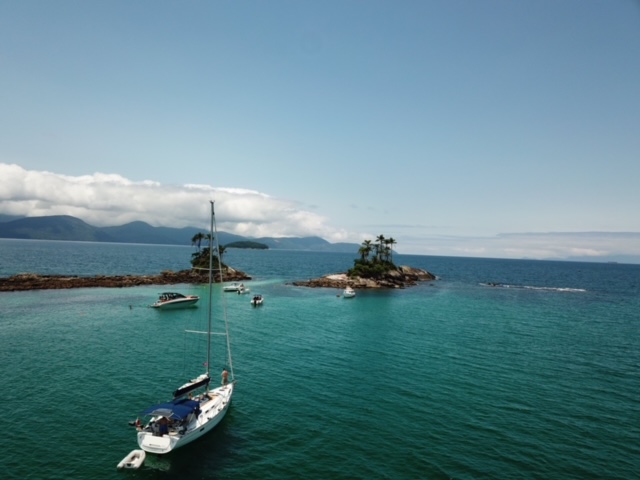
Ilhas da Botina
We played around for a good hour until the anchorage started filling up with tour boats carrying day trippers from Angra dos Reis. These waters are like an open-air aquarium. I looked for octopus in the rocks and for sea turtles but no luck. We swam among lots of triggerfish, zebrafish, and other smaller types of which I do not know the names.
As soon as we left the Ilhas Botinas, the wind picked up and we reached peaks of eight knots of speed on our almost straight shot of a thirteen-mile-long port tack from Ilha Grande to the entrance of the Saco de Mamanguá, which de locals call the only fjord in Brazil. It is a long and narrow bay that ends in a cul-de-sac with, on the southeast side, depths of less than 2 meters and a swampy area.
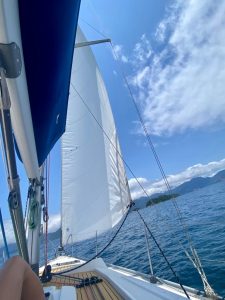
Fun sailing action
On the way to Mamanguá, we passed several empty crude oil tankers at anchor, waiting for their next load.
Halfway down the “fjord” we found the village of Praia do Cruzeiro and anchored there for lunch before continuing further inside to Bananal, a stunning anchorage, well protected from all winds and with white sand beaches. A perfect place to spend our last night before returning to the base.
Or so we thought… We had left our hatches open with the mosquito screens in place, but these screens were no barrier for the pesky No-See-Ums. We all got attacked so aggressively that we had to close the hatches at half past midnight, trying to kill as many as we could find and trying to go back to sleep.
At six o’clock, I heard Kevin start the engines and soon he and Delana raised the anchor to escape the onslaught of these miserable insects.
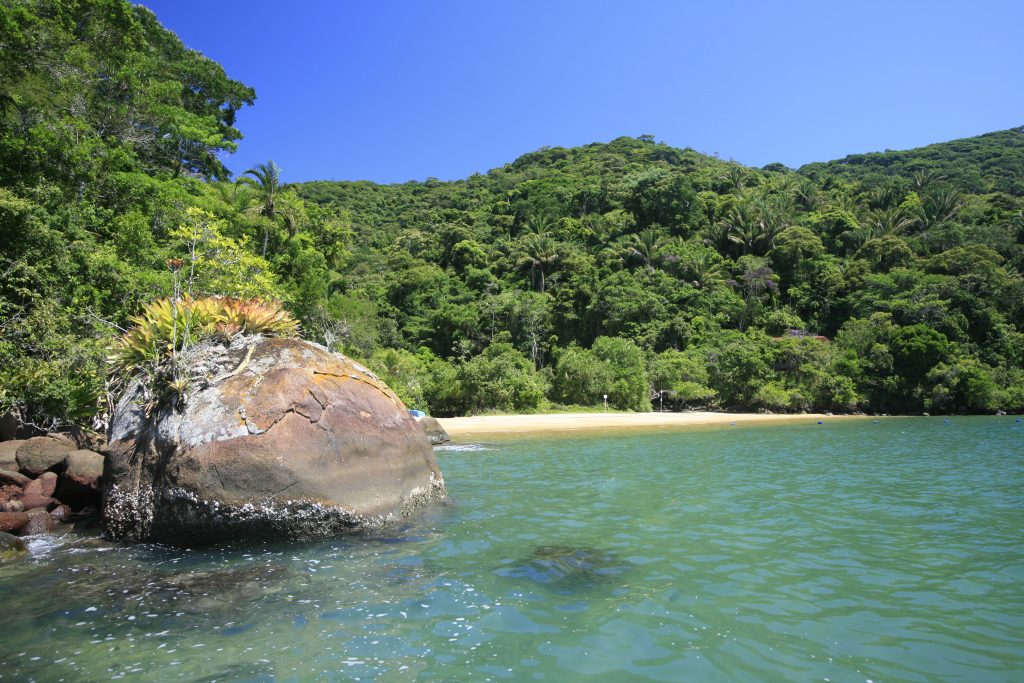
Bananal anchorage, a mosquito’s paradise
In the hope to improve our day by finding fresh oysters for breakfast, we made a beeline for Ilha da Cotia, where we had spent our first night. No oysters and still plenty of flies inside the boat.
Around noon, we left the anchorage and visited nearby Paraty Mirim, a tiny village with a restored colonial church and a long beach with some bars. The wind was blowing and, while Kevin, Mila and I paddled ashore to explore the area, Delana stayed on the boat. Taking a rest from walking around, we had a Jorge Amado in a rustic bar and learned about the history of this settlement.
When the Portuguese first started bringing African slaves to Brazil, Paraty was one of the ports where they would be sold. However, after several weeks on the ocean and carrying God-knows-what kind of diseases, the slaves were disembarked in this small village of Paraty Mirim and kept for forty days in quarantine. Survivors and those deemed to be in good health were then transferred to Paraty to be sold.
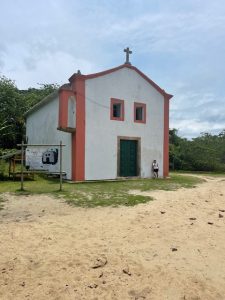
The small church of Paraty Mirim, inaugurated in 1746
Supposedly, Paraty Mirim was a smaller version of Paraty with a similar architecture, but we did not find any ruins to confirm this.
The wind was still blowing straight into the beach and paddling that dinghy back would have been an exercise in futility. Fortunately, we found a local water taxi willing to drag us back to our yacht and we got ready for our final leg, back to the base, where the dock crew was waiting and helped us dock.
They came on board with insect killer and fumigated the cabins to kill the last bloodsuckers that were still hiding in nooks and crannies. Being on shore power, we finally were able use the air conditioning on board without having to worry about open hatches and No-See-Ums.
For our last dinner in Paraty, we chose the restaurant of the marina where we enjoyed a delicious meal and excellent service and soon, we were in the AC-comfort of our cabins for our final night on Malicia.
We got checked out at around eight-thirty the following morning, had breakfast at the marina restaurant and boarded our taxi for the four-hour ride to Rio de Janeiro, where, like any other tourist, we had to visit the Sugar Loaf Mountain, the statue of Christ on top of the Corcovado and, of course the beaches of Copacabana and Ipanema.
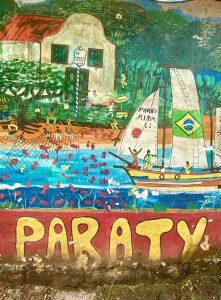
NOTES:
This is a sailing area largely unknown to foreigners, except for Argentinians who come here to charter, and it deserves to be discovered by North Americans.
The weather in November is not supposed to be as rainy as what we experienced but it did not bother us that much. When the sun comes out however, the scenery is spectacular,
We have only scratched the surface of what can be seen and done in this area. Too bad that we did not have an outboard on our dinghy. We would have been able to access more secluded places.
The Delta yachts are Brazilian made. They are comfortable yachts with the same IKEA-like interiors (as I call them) as the Bénéteau’s, Jeanneau’s and other mass-produced sailing yachts.
They sail well and they offer excellent value for the money. A 41’ Delta costs, ready to sail, about $150,000.00 compared to almost double that amount for a Bénéteau Oceanis 40.1.
These boats have no wastewater tanks. The one we sailed had electric heads and everything went overboard.
If you wish to charter in Brazil, you will need to provide a copy of your ASA IPC or be able to prove that you have the ASA 104 certification. Contact us for charter rates and availability in Paraty with Wind Charters.
Will we return? Absolutely… And we hope that you will join us there for our 2023 flotilla.
Capt. Jean De Keyser
Med Sailing Adventures.
























